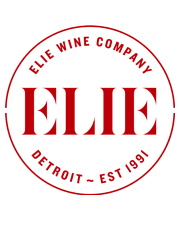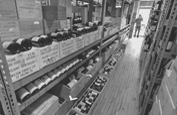The Paradox of Chenin: Ten of Lower Loire’s Top Young Producers Showcase The Multifaceted Faces of The Grape in Three Distinct Regions (10-Bottle Sampler $399)
Join Us for Saturday Sips: The Paradox of Chenin
Come as you are; come any time that’s convenient for you during our business hours to sample selection from this week’s selections. Our staff will be on hand to discuss nuances of the wines, the terroirs reflected, and the producers.
If ever a grape variety deserves the Chameleon Award, it’s Chenin in the Loire. Its sheer versatility in the Garden of France may account for the fact that American palates have tended to champion somewhat one-dimensional (if beautifully structured) Sauvignon Blancs from Pouilly-Fumé and Sancerre, and laud the briny, if simple Muscadet as a go-to shellfish accompaniment, while most would be hard pressed to name a Chenin from the Loire beyond Vouvray.
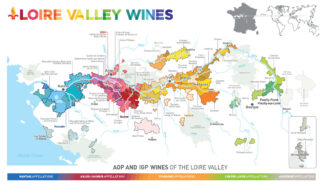
And yet, with relative ease, Chenin makes outstanding wines that are dry, sweet, sparkling and every nuanced shade between. It is not only the most dynamic variety grown in the Val de Loire, it can rival the most age-worthy white wines made anywhere. In Savennières, for example, the grape’s somewhat neutral natural taste soaks up terroir, making it the apogee of cellar-worthy Chenin. Likewise, an ability to mature is the hallmark of Vouvray from Touraine, where patience may reap rewards after twenty years or more in the development of baked apple subtleties while the acidity remains crisp with youth.
And the wine moves to the sweet side, pinning down the acids is one of the consummations that Chenin strives for; here, a cooler climate is a boon, and the narrow valleys produce cool mists, especially in autumn, promoting botrytis.
The third Chenin style, sparkling, is centered around Saumur, where with Champagne-like cellars carved out of the friable rock cliffs. In Saumur, though, sparkling wine producers often blend Chenin with Chardonnay and Cabernet Franc and the more recently created appellation, Crémant de Loire, which can be made anywhere along the Loire Valley, is more likely to be made from Chardonnay and Pinot Noir as it is in Champagne. But in Touraine, in Vouvray and Montlouis-sur-Loire, Chenin returns to its diva role. Here, sparkling wine is made using grapes from vines used for still wines, only picked earlier to instill the high acid content that is a hallmark of balance.
This week’s package showcases the three multifaceted faces of Chenin as displayed by some of the region’s top young producers from each of the primary appellations.
Written In Stone
The story of terroir is first carved into stone, and in the Loire—as in Champagne and Chablis—its foundation is a peculiar geological phenomenon known as the Paris Basin. Surrounded by high-ground massifs, the basin formed following the withdrawal of an inland sea that covered much of central France 70 million years ago. Today, alternating beds of limestone, sand and clay dip toward the city of Paris, their outcrops forming concentric patterns and filling valleys with rocks from the Paleogene and Neogene periods.
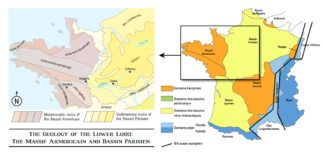
In general, Loire’s soil can be defined as consisting of four types—Kimmeridgian, Portlandian, Oxfordian and Albian. In Anjou, the subsoil is mainly slate and carboniferous schists admixed with volcanic rock, all originating from the Massif Armoricain. Between Angers and Saumur, there is a transition from older bedrock to the west to the sedimentary basin to the east. In Touraine, the subsoil is made up of tuffeau limestone, sand and siliceous clay.
Each has a specific role to play in the many mineral notes that show up in these wines.
Anjou-Saumur
This hyphenated region pays homage to the similar terroirs of Anjou and its much smaller neighbor Saumur. Chenin the common thread. Anjou, formerly known for its aromatic and full-bodied sweet wines (often using botrytized grapes), is expanding its reputation into rich, dry wines, notably in Savennières. Saumur’s fame has traditionally been derived from its Chenin-based sparkling wine drawn from chalky soils similar to Champagne.
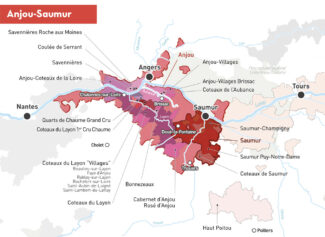
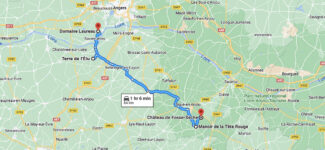
Savennières A.O.P
What a difference a set of regulations make! Once known almost exclusively for sweet wines (often from late-harvested grapes in the typical Anjou style), Savennières has forged for itself a spot among the most respected French appellations for dry, cellar-eager white wines. Chenin is the only permitted grape, making Savennières the lone dry white appellation in Anjou’s sea of sweet. This status was originally sought in order to compete with the Sauvignon Blancs of Sancerre—crisp, austere and often steely, yet paradoxically, both full-bodied and light. Although standard Savennières is now officially dry, Demi-sec and Moelleux and Doux versions are also allowed, with rules to indicate precisely how wines with higher levels of residual sugar must be labeled.
Savennières is river country, and the Loire retains the supreme influence on the climate. ‘La douceur angevine’ is a local term used to describe the smooth and subtle nature of the wines; It translates to ‘The sweetness of Anjou’ and may also refer to that easy riparian lifestyle that is characteristic of Savennières. Perched on a rocky plateau, the town overhangs the Loire River and several clefts form castings that which benefit from an ideal south/southwest exposure. Soils are not deep, and the shale gives a pronounced minerality to the wine.
Domaine Damien Laureau
The respected magazine ‘La Revue de Vin de France’ has singled out Damien Laureau as ‘the future of Savennières’, both for his back-to-basics approach and for his astonishingly wonderful results. Working out of a small shed, Laureau is indeed a forward-looking winemaker: Fruit extracts and other non-synthetic treatments are used on the vines in place of harsh chemicals, and has begun to experiment with harvesting just when the grapes turn yellow instead of the ‘green stage’ that has been viewed as a Savennières tradition, leaving wines with a potential alcohol volume of 12% or less. Equally, Laureau dodges high levels of botrytis to keep his wines lively with acids.
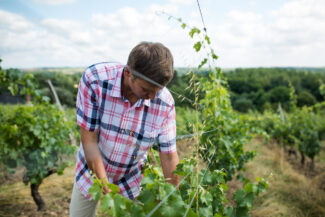
Damien Laureau, Domaine Laureau
“The old methods resulted in backward, stern, and fairly austere wines that took at least a decade to reach a point where they began to show their charms,” he explains. “Trends have begun to change: Better farming, in many cases biodynamic or organic, have reduced yields and we are now hand-harvesting golden grapes and back away from reduction by using neutral wood barrels for aging and less sulfur during winemaking. These steps combine to produce more approachable wines that do not require aging or a rigorous intellectual understanding of Chenin grown on schist to enjoy them.”
Laureau’s twenty-six acres are primarily in AOP Savennières, with a small plot in Roche-aux-Moines Roche. He farms in the vineyards of Moulin de Beaupreau, Chambourcier, Les Petites Coulées and La Petite Roche.
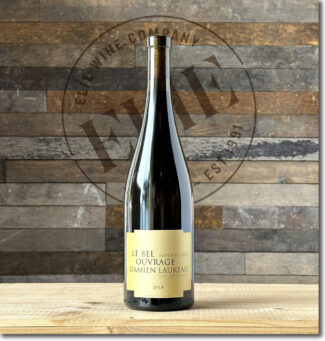 Damien Laureau ‘Le Bel Ouvrage”, 2018 Savennières ($58)
Damien Laureau ‘Le Bel Ouvrage”, 2018 Savennières ($58)
Bel Ouvrage is a firm, long-lived wine from schist soils from Laureau’s five acre holding in Les Petites-Coulées (located close to the western edge of Roche-aux-Moines) as well as a three acre parcel in the Chambourcier lieu-dit. The wine is barrel fermented and aged for a year before being racked into vat to rest on lees for another 6 months. Only the ‘cœur de cuvée’ (the heart of the pressings) is used in ‘Le Bel Ouvrage’, to produce what Laureau considers ‘the purest expression from the best soils’. This produces a wine of substance built to age and develop over many years. The wine shows richly spiced white peach wreathed in a light, clean smokiness.
*click on image for more info
VdF Loire-Anjou
The concept of VDF wines was strikingly innovative at the time it was introduced (2010), allowing vintners to blend wines from different regions and new combinations of grape varieties. It represented a fundamental shift for a country so tied to geographic classification for its wines, but has become one of the country’s biggest selling wine designations.
Terre de l’Élu
When Charlotte and Thomas Carsin purchased Clos de l’Élu in 2008, they may have been new to winemaking, but they had plenty of industry street cred. Thomas had been a wine consultant and Charlotte worked in communication and management. They fell in love with each other, then with the property, situated on some of the most remarkable terroirs in Layon; they began to farm organically, the second most important change they brought to the estate. The first was the name change: As Charlotte explains it, “The word ‘Clos’ is reserved for appellation wines only, and we felt straightjacketed by the rules we’d otherwise have to follow. Terre de l’Élu means ‘Land of the Chosen’.”
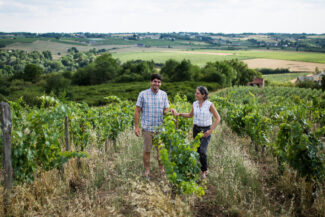
Thomas and Charlotte Carsin, Terre de l’Élu
Terre de l’Élu is located in Saint-Aubin de Luigné with fifty acres spread over 30 different plots scattered from Chaume (famous for its sweet style of botrytized Chenin) to Chaudefons-sur-Layon near the confluence of the Layon and Loire. In this warmer, drier climate, red varieties are widely cultivated alongside the traditional Chenin, all planted on the black slate soils of the western portion of Anjou.
Thomas discusses the difficult decision to withdraw the estate from the AOP of Anjou: “After years of having wines being rejected by the appellation and the associated costs and delays this bureaucratic nightmare entailed, we opted to label ourselves Vin de France. The irony is that these wines are all from the same vineyards and made with even greater care vintage after vintage.”
 Terre de l’Élu ‘Bastingage’, 2020 VdF Loire-Anjou ($33)
Terre de l’Élu ‘Bastingage’, 2020 VdF Loire-Anjou ($33)
A cuvée of 25-year-old Chenin vines grown shale and sandstone. Grapes are harvested by hand with a strict selection process in the vineyard that requires several passes to ensure that only ripe and healthy fruit is sent to the cellar. There it sees traditional fermentation on indigenous yeast and aging in barrels, followed by a few months in vat before bottling. The wine has a buttery complexity, showing candied lemon behind the type of pronounced minerality typical of wines with roots in shale terroirs.
*click on image for more info
Saumur A.O.P
Saumur has been a major focal point for the commercial wine trade since the 12th century, when (under Henry IV) it was the Huguenot capital. As an appellation, its terroir is rich in Loire’s characteristic calcareous rock, much of which was quarried over the centuries, leaving ideal cellars for aging Saumur wines. The hyphenated Saumur-Champigny is reserved for the 8 communes closest to the city of Saumur, and is restricted to around 3,700 acres, generally hilltop vineyards buffered against the west winds.
Manoir de la Tête Rouge
Intense, driven and passionate, Guillaume Reynouard is the fox in charge of the chicken coop—as well as being a winemaker, he is president of the Syndicat des Vins Saumur and has a particular enmity for growers who rip out Pineau d’Aunis in favor of easier-to-grow varieties.
Taking charge of Domaine Manoir de la Tête Rouge in 1995, Guillaume soon converted to organics and was certified Biodynamic in 2010. The estate enjoys remarkably productive clay/ limestone terroir and he takes pride in ‘living vineyards’ where the soil is worked by hand to ensure that roots go deep and grass grows between rows to promote insect and other plant life; synthetic chemicals are prohibited. In the cellar, grapes are fully destemmed, indigenous yeasts are preferred, with no additions and very minimal sulfur use.
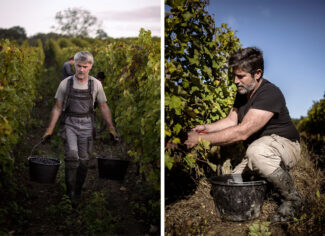
Guillaume Reynouard, Manoir de la Tête Rouge
According to Reynouard, “Responsible agriculture is a way of life and of thinking. When growing grapes, I aspire to act sensibly for the planet—a state of mind that develops naturally from a respectful relationship with nature. Knowing how to adapt to a changing environment requires constant questioning while the planting of forgotten varieties such as Pineau d’Aunis, the incorporation of trees into the cultivation of the vine (agroforestry) and the gradual abandonment of ‘modern’ oenology are avenues that I have followed for more than 20 years.”
 Manoir de la Tête Rouge ‘l’Enchentoir’, 2018 Saumur ‘natural’ ($47)
Manoir de la Tête Rouge ‘l’Enchentoir’, 2018 Saumur ‘natural’ ($47)
100% Chenin fermented spontaneously in new oak and bottled with low sulfites; less that 30g/l. Unfined and light filtered, the wine shows notes of white flowers and quince. Bone dry at less than 1g/l residual sugar, it makes an ideal ‘Saumurtime’ companion to grilled fish.
*click on image for more info
VdF Loire-Saumur
Freed from some of Saumur’s more restrictive rules, this VdF designation allows the creativity that is part of the spirit of Loire winemakers to experiment and innovate.
Château de Fosse-Sèche
If a single concept can describe the most profound change that has seized modern European winemaking, it is biodynamics—techniques that their forebears may have practiced by necessity without naming it, but which today is a nod to the cosmic continuum of which agriculture is only a part. Nowhere is this visionary approach more conspicuous that at Château de Fosse-Sèche, where twin brothers Guillaume and Adrien Pire (who grew up in Madagascar) bring with them not only degrees in agronomy and viticulture, but a deep respect for the wild land of their youth. Along with their wives Julie and Cécile, they have instilled Fosse-Sèche’s 800 year history with an abiding belief in a holistic remake of all phases of winemaking.

Adrien and Guillaume Pire, Château de Fosse-Sèche
Like an iron-red ruby amid the seafoam of limestone, the soils of Fosse-Sèche are rather unique in the Loire—a fact that has been recognized since the 13th century, when Benedictine monks first planted vines there. Move the clocks ahead to 1998, when the Keller-Pire family took over the estate, enraptured by the beauty of the surroundings and its exceptional terroir, composed of iron oxide and flinty silex just beneath the topsoil. Two-thirds of the Fosse-Sèche property is a natural reserve, with a bird sanctuary, acres of honey flowers, goats and thriving wetlands; of the hundred eleven acres of property, only 37 are used for vines. The single parcel is planted to Cabernet Franc (70%) and Chenin (30%).
Hélène Berteau, a beekeeper, also tends hives on the estate and benefits directly from everything that is done for the ecosystem. Guillaume Pire says, “We maintain between 2 and 5.5 hectares of pollen fallow. The logic of this mixture: bee plants attract pollinating insects and legumes fix nitrogen from the air. These plants loosen and aerate the soil, attract auxiliary insects (ladybugs, butterflies, etc.) and release seeds for birds. The deficiency of pollen and nectar is an important factor in the gradual extinction of populations of bees and other pollinating insects. These flowers are also shelters and potential sources of food for wildlife thanks to this richness in insects.”
 Château de Fosse-Sèche ‘Arcane’, 2020 VdF Loire-Saumur ‘natural’ ($45)
Château de Fosse-Sèche ‘Arcane’, 2020 VdF Loire-Saumur ‘natural’ ($45)
Most Saumur vineyards are grown on a porous yellow limestone known as tuffeau. However, Fosse-Sèche’s biodynamic Chenin vines are planted on a distinctive Jurassic-era flint plateau with gravel and clay. The unique soils and the curved aspect of the vineyards allow for the fresh breeze to cool the vines rooted in heat-absorbing flint soils. The wine displays this bright ripeness; the nose features subtle flavors of honey, pineapple, green apple and pear, leading to a long finish replete with salinity and minerality.
*click on image for more info
Touraine
Touraine’s 13,000 acres follow the Loire river for about sixty miles from Blois in the east to Chinon and Bourgueil in the west; beyond, the river continues into the adjacent Anjou district. Wines made under the regional appellation may be white, red, rosé or sparkling. Whites account for 59 percent of production, reds for 22, rosé for eight and sparkling 11 percent. The whites are most commonly based on Sauvignon Blanc, which accounts for 43 % of all Touraine plantings. Chenin comes a distant second at 7%. The latter is collected almost exclusively in the subregion Montlouis-sur-Loire.

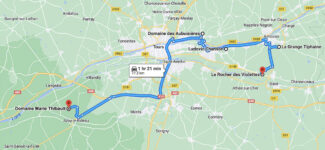
Montlouis-sur-Loire A.O.P
The Montlouis reputation is often overshadowed by Vouvray, just to the north on the other side of the Loire. In fact, until the creation of the Montlouis appellation in 1938, the commune’s wines were labeled and sold as Vouvray.
The thousand-acre appellation includes fifty wine producers in three communes along with a production and marketing co-operative with 15 members. It is bordered by the Loire to the north, the Cher to the south and the forest of Amboise to the east. It is situated in the Indre-et-Loire department of the region Centre-Val de Loire and contains soils that are clay and flint–based soils, with vine roots entering a lower layer of limestone; such soils hold moisture well, even in dry years.
The appellation is planted exclusively to Chenin and produces wine capable of improving for a decade or more. This is because Chenin’s naturally high acidity acts as a preservative which protects the wine from breaking down as it ages. Another plus is Chenin’s intense aromatic composition, marked by notes of acacia blossom, quince and green apples in youth, then honeysuckle, quince and lanolin over time.
Le Rocher des Violettes
After studying winemaking in Chablis and Beaune and earning degrees in viticulture and oenology, Xavier Weisskopf found work at Gigondas producer Château de Saint Cosme, and under taskmaster Louis Barruol, rose quickly to the rank of Chef du Cave. He was responsible for four vintages before a passion for Chenin lured him to Montlouis, where was fortunate to find 22 acres of old vine Chenin. He immediately converted the farming of all his vines to certified organics, with the aim to allow these precious old vines to speak without a smokescreen.
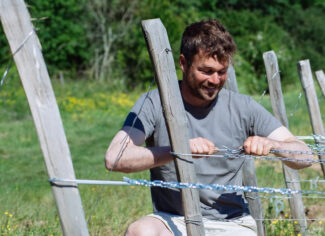
Xavier Weisskopf, Le Rocher des Violette
“My goal is to protect this incredible legacy of these old vines,” he says candidly. “They are capable of making wines of clarity, focus and laser precision.”
Since obtaining organic certification in 2012, Weisskopf has embarked on an acquisition project, purchasing small plots divided between the appellations of Montlouis and Touraine. Amazingly, contained within his (now) 37 acres are Côt vines that are around 130 years old.
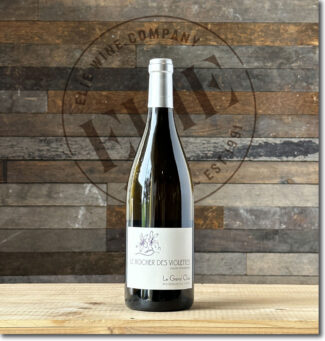 Le Rocher des Violettes ‘Le Grand Clos’, 2020 Montlouis-sur-Loire ($33)
Le Rocher des Violettes ‘Le Grand Clos’, 2020 Montlouis-sur-Loire ($33)
100% Chenin Massale selection from three Montlouis lieux-dits, Les Borderies, Le Grand Clos and Bel Air. These parcels contain the estate’s oldest Chenin vines, more than ninety years old. They are high-density-planted on south-facing slopes where the soils are rich clay and silex over chalk. Having been fermented and raised in 500-liter barrels for 10 months, the subtle wood notes shows up as almond pastry. The wine itself is bright with stone fruits like apricot and peach, while the taut quality is evidence that these qualities will mature without losing freshness.
*click on image for more info
La Grange Tiphaine
Damien Delecheneau represents the fifth generation of his family to farm this lieu-dit on the upper part of the gorgeous Renaissance city of Amboise, just east of Montlouis-sur-Loire. Although he took the property over when his father retired in 2002, it wasn’t until 2007 that Damien decided to dedicate the property solely to wine production as opposed to the cereal grains the farm also produced. It took a global recession and some soul searching before Damien concluded that his forefathers had been right to diversify. “The overspecialization of a farm towards one crop is unproductive, from both a financial and environmental point of view.” He explains. And so, he began a side business of négoce, and helped growers around him to convert to organic farming by buying their fruits. In addition, he dedicated some fields for horses, pasture, hay production, with the idea to maybe come back one day to farm other crops.

Damien and Coralie Delecheneau, La Grange Tiphaine
With his Alsace-born wife Coralie handling sales, Damien concentrates on 42 acres of vineyard split almost evenly between Amboise and Montlouis.
“Both our minds meet in the cellar,” says Coralie. “where we have invested in finding the right tools for the quality of wine we insist on producing, and with the minimum amount of sulfur. All our domain cuvées are made with the same level of perfectionism; hand-harvested, hand-sorted in the vineyard then again at the cellar, pressed with two top-of-the-line pneumatic presses fed by gravity. The whites are pressed whole-cluster directly, cooled and settled overnight, then fermented either in cement tanks, eggs or barrels.”
 La Grange Tiphaine ‘Clef de Sol’, 2021 Montlouis-sur-Loire Sec ($37)
La Grange Tiphaine ‘Clef de Sol’, 2021 Montlouis-sur-Loire Sec ($37)
Clef de Sol, meaning ‘treble clef’ is a tribute to the music of both Damien (clarinetist) and Coralie (choirist). The wine is a blend of southern-exposed plots located in Montlouis grown on clay and flint over tuffeau where the vines are mostly 80 years old. The Delecheneaus consider this a benchmark wine for Montlouis, referring to it as ‘Savennières meets Brézé’, with specific smoky notes coming from the Montlouis flint. It displays a floral side, lemon-verbena and linden, quinine, peach pit and salt. The oak is very well balanced, with just a hint of white tobacco.
*click on image for more info
Ludovic Chanson
Chanson’ is an ideal name for this beautiful fifteen acre estate: It means ‘song’. It’s also the surname of the owner, Ludovic Chanson, who took over from retiring winemaker Alex Mathur in 2009. The vineyards lie on the plateau near the village of Husseau, a five-minute drive outside of Montlouis. Most of Chanson’s property is planted to Chenin; the rest to Chardonnay and Sauvignon Blanc. Soils are clay heavy with a deep limestone base and many of the parcels are littered with silex and flint and the average vine is about 40 years old.

Ludovic Chanson
Chanson trusts his processes and focuses on farming; the estate was converted to organic before Ludovic took over, and he has since achieved certification. Harvesting is done by hand in small baskets, with one pass for the Sauvignon Blanc and Chardonnay and multiple passes for the Chenin, depending on the cuvée for which the grapes are being picked.
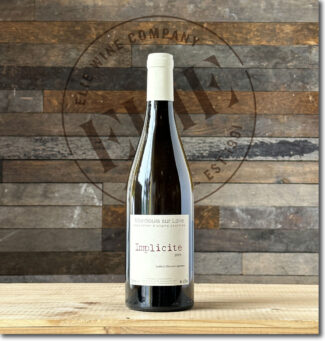 Ludovic Chanson ‘Implicite’, 2019 Montlouis-sur-Loire Sec ‘natural’ ($49)
Ludovic Chanson ‘Implicite’, 2019 Montlouis-sur-Loire Sec ‘natural’ ($49)
Chenin from the final pass through his oldest vines; according to Chanson, these are ‘the most beautiful grapes you can pick.’ After spontaneous fermentation in neutral oak, the wine undergoes a long élevage, resulting in a luscious blend of stone fruit, honeycomb, almond pastry and clean candied apricot.
*click on image for more info
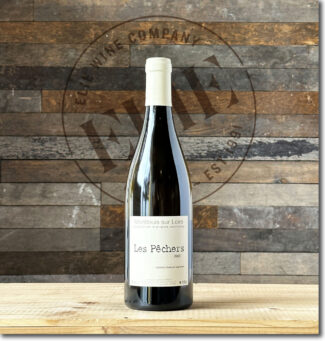 Ludovic Chanson ‘Les Pêchers’, 2020 Montlouis-sur-Loire Sec-Tendre ‘natural’ ($37)
Ludovic Chanson ‘Les Pêchers’, 2020 Montlouis-sur-Loire Sec-Tendre ‘natural’ ($37)
Chanson noticed some botrytis on the grapes in this vintage; it adds layers of honeyed depth to the fruit. 100% Chenin grown in clay, deep limestone, some silex and flint, the grapes undergo direct pressing, then are transferred to barrels with 10 months maturation in 400-liter barrels. No fining, but the juice is given a light diatomaceous earth filtration and bottled with a scant whisper of sulfur, allowing the term ‘natural.’ The nose shows roasted almonds and candied pears, the rich, sweet tones of the palate echo these and the ample acids keep the package in balance.
*click on image for more info
Vouvray A.O.P
“Vouvray is Chenin, and to a certain extent, Chenin is Vouvray” –Jancis Robinson.
Although our recent discoveries might test the ‘extent’, it is fair to say that the AOP Vouvray is the world’s most recognized Chenin, even though those two words do not appear on the label. Certainly the most famous and most respected appellation in Touraine, the title covers Chenin wines of styles ranging from dry to sweet, from still to sparkling, from eight villages around the medieval town of Vouvray on the northern banks of the Loire river. 5,436 acres are currently under vine. Ironically, perhaps, the region’s sole production grape is not even called Chenin, but Pineau de la Loire.
In any case, Vouvray was one of France’s earliest official appellation titles, created just after the INAO was founded in 1936 although the region has produced quality white wine since the Middle Ages. The critical element of the local terroir is tuffeau, the calcareous rock found in pockets throughout the central Loire, most notably in Saumur and here in Vouvray. Tuffeau is a soft, porous limestone that exist as chalkier, firmer tuffeau blanc and softer, sandier tuffeau jaune. Due to its porosity, tuffeau strikes an excellent balance of drainage and water retention, saving vines from both waterlogging and drought. Local topography creates sufficient differences in the maritime/continental climate to create pockets where exceptionally age-worthy wines find a home.
Domaine des Aubuisières
To master the art of ‘Vouvray’, one must perfectly integrate the minerality of the soil with the fruit acids of the grape. Bernard Fouquet, a quiet-spoken man, is regarded in France and the international press as a winemaker who has excelled at this, vintage after vintage.
Having burst onto the Vouvray scene in 1989, Fouquet bottled a number of high-quality sweet wines which took advantage of everything that exalted vintage offered. He followed up with the brilliant 1990 vintage and since then, various cuvées from the 1995, 1996 and 1997 vintages remain brilliant after more than twenty years of age.

Bernard Fouquet, Domaine des Aubuisières
Bernard has recently handed over the running of the domain to Charles Lesaffre, formerly the commercial director of Vignobles Feray (which includes Château Moncontour). The transition was accelerated during the Covid-19 pandemic, Charles essentially taking over at the time of the 2020 harvest, with a formal handover in 2021.
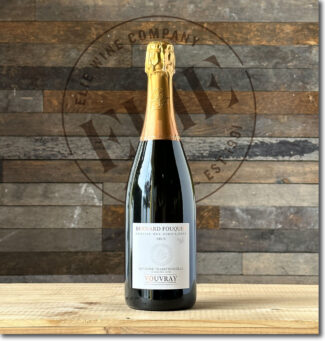 Domaine des Aubuisières, 2019 Vouvray Sparkling Brut ($23)
Domaine des Aubuisières, 2019 Vouvray Sparkling Brut ($23)
100% Chenin, made when the winemaking was still in the hands of Fouquet. A precise and moderately intense sparkling wine with aromas of toast, apple and beeswax behind mineral-tinged smoke and driven through by bright acidity. Superb balance, length and structure.
*click on image for more info
VdF Loire-Touraine-(Azay-le-Rideau)
Evidence exists that winegrowing in Touraine began in Azay le Rideau during the Gallo Roman Empire. It is also the site of the magnificent Château d’Azay, whose royal patrons gave preference to local terroir wines at their tables. Evenly split between rosé made of Grolleau and bright, Chenins, the appellation stretches over eight communes on the banks of the Indre and the Loire rivers close to where the rivers meet. With a surface area under 150 acres, the subsoils are a blend of clay, limestone and Aeolian sand. Climate tends to be mild enough that, in particularly warm years, favors the production of botrytized wines.
Domaine Marie Thibault
“I grew up in the Loire Valley, but unlike many vignerons working in the Loire, I did not come from a winemaking family,” says Marie Thibault, adding, “But also unlike many of them, I have degrees in both biology and oenology.”
Marie Thibault began making wine in the early 2000s, working for a time with François Chidaine in Montlouis, where she fell in love with Chenin Blanc. In 2011, she founded her own nine acre estate on a single windy slope in Azay-le-Rideau, a lesser known commune of Touraine. She immediately converted to organics and has been certified with Ecocert since 2014. Among the natural elements in her vineyards is the flock of two dozen ewes that graze between the vine rows during the autumn; every ten days, they are penned inside a new hectare to keep the soil naturally fertile and the grass clipped.
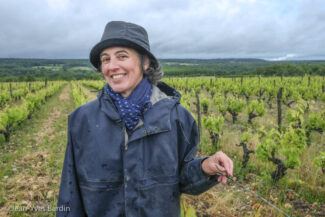
Marie Thibault, Domaine Marie Thibault © Jean-Yves Bardin
“My vineyard is small, but the soils are extremely varied and as such, so are the grapes I grow. I work with Côt (Malbec), and have a special love for Gamay, Grolleau, Chenin Blanc and Sauvignon Blanc. Most of my vines are at least 50 years old. I compensate for small production by purchasing from organic estates nearby, especially those owned by my family.”
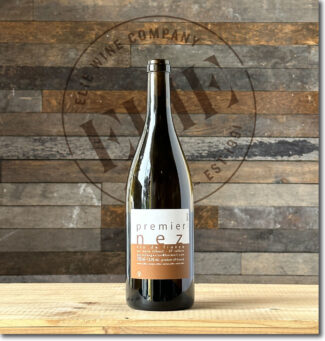 Domaine Marie Thibault ‘Premier Nez’, 2019 VdF Loire-Touraine-Azay-le-Rideau ‘natural’ ($42)
Domaine Marie Thibault ‘Premier Nez’, 2019 VdF Loire-Touraine-Azay-le-Rideau ‘natural’ ($42)
From Marie’s contiguous parcel on a windy slope that is drier than the other vineyards of Azay-le-Rideau. Terroir here is composed of Chenin-loving, white clay and limestone. This wine, from 40-year-old vines, sees 14-15 months of élevage in demi-muid and barriques to produce a spicy wine loaded with dried citrus peel, aniseed, pine resin, walnut and yellow pear.
- - -
Posted on 2023.07.13 in Montlouis-sur-Loire, Touraine, Anjou, Vouvray, France, Wine-Aid Packages, Loire | Read more...
Champagne Pascal Lejeune’s Terroir Fundamentals: Preserving Place’s Details in Single Parcel, Single Village And Back to The Bigger Picture.
Join Us for Saturday Sips: Champagne Pascal Lejeune
Come as you are; come any time that’s convenient for you during our business hours to sample selection from this week’s selections. Our staff will be on hand to discuss nuances of the wines, the terroirs reflected, and the producers.
The permutations of Champagne are as varied as its terroir, but in the exploration, facts keep popping up in triads: In the favored grapes (Pinot Noir, Chardonnay, Meunier), in styles (Blanc de Noirs, Blanc de Blancs, Rosé) and in varying level, in dosage (Brut, Sec and Doux). There are strata in each of these categories, of course, but you get the picture.
Now the trio of Pascal, Sandrine and Thibaut Lejeune (a dad, mom and son team) from the Coteaux Sud d’Épernay, are excelling in the production wines from three categories: Village level, lieu-dit (monoparcellaire) level and a cépage made of grapes from the three villages where they grow fruit, Épernay, Moussy and Vinay.
A new addition to our Champagne portfolio, Champagne Pascal Lejeune is a small grower/bottler whose reputation is as solid as the output is small. These wines represent both a spirit of renewability in an age-old product and some of the most terroir-reflective Champagnes we’ve tasted.
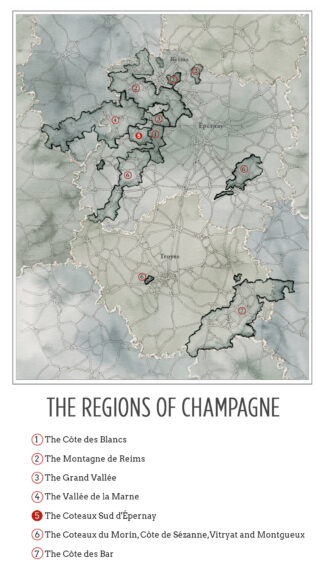
The Coteaux Sud d’Épernay: Middle Grounds
The Reims-based Union de Maisons de Champagne names 17 ‘terroirs’ in Champagne; among them, on the left bank of the Marne river, is Côteaux Sud d’Épernay. As the name suggests, it occupies the slopes (côteaux) south of Épernay. These slopes are formed by three streams (another triad), Le Cubry, Le Darcy, and Le Mancy. Le Cubry empties into the Marne at Épernay, and forms the valley that runs to the southwest and further west to Saint-Martin-d’Ablois. Le Darcy is a tributary of Le Cubry that empties into the latter at Pierry and Le Mancy is a tributary of Le Darcy that empties into it in the northern part of the Mancy commune.
Enough geography? On to grapes! The Coteaux Sud d’Épernay is fairly evenly balanced between Meunier at 46.7% and Chardonnay at 40.9%, with Pinot Noir making up the remainder. Somewhat simplified, it can be said that Chardonnay is most common in Épernay and in the valleys of Le Mancy and Le Darcy in the north and east, while Meunier prevails in the valley of Le Cubry (excluding Épernay) in the center and west.

Sandwiched between two powerhouse wine regions (Côte des Blancs and Vallée de la Marne), the Coteaux has an identity removed from either one. Its terroir is different from the clay-heavy soils of the Marne and it lacks the pure chalk that puts the ‘blanc’ in the Côte des Blancs.
In short, these Champagnes are uniquely situated to offer the best of both worlds. As a result, the Coteaux Sud d’Épernay has long fought for recognition as entity unto itself, not necessarily a sub-region of its big brothers on either side.
The current vineyard surface in the Coteaux Sud d’Épernay is a little over 3000 acres distributed among 878 vineyard owners in 11 communes.
Champagne Pascal Lejeune
Beating swords into ploughshares is a Biblical injection that Pascal Lejeune takes literally—he left his career in the military and gave himself to the vine. It didn’t hurt that he fell in love with a Champagne grower’s daughter: Pascal’s wife Sandrine hails from a family that has been growing grapevines in Moussy (where more than half of the vineyard’s grapevines are located) on the south-facing slopes of Épernay since 1910. Originally a side operation, not an essential part of the family’s activities, Sandrine’s great grandfather Edmond played an active part in creating the Moussy cooperative.
In 1995, when Pascal and Sandrine took the reins, their aim was to usher in a new era by enlarging the vineyard area into nearby terroirs, and by enriching the range of offerings via new cuvées: As a brand, Champagne Pascal Lejeune was born.

Pascal and Sandrine Lejeune, Champagne Pascal Lejeune
Says Pascal, “I believe I have a responsibility and commit myself collectively to our business and our terroir in order to perpetuate and monitor developments for our children and future generations. This requires a sincere respect for people, nature, our vines, our soils, and careful work in order to obtain quality grapes. To offer you the best that nature offers us, our vintages are very different, there is something for every occasion and taste… Nature does things well!”
This commitment to nature has been proven out over the past 17 years; Lejeune was one of the first producers in Champagne to plant specially-selected grass species between vine rows. Manual techniques are used for pruning, trellising and debudding. “The benefits of this special care can be observed,” says Sandrine. “Biodiversity is maintained, the soils are protected, the erosion is limited, and as the grapevine roots develop, the phytosanitary products have been significantly reduced.
Pascal adds: “Our aim is to give our soils the utmost respect in order to express the organoleptic qualities with authenticity and reveal the subtlety of our champagne. The culmination of these special treatments is, strictly speaking, the grape harvest, which is carried out entirely by hand, reflecting an entire year’s labor of love.”
Pascal and Sandrine are happy with the latest addition to their team, their son Thibaut, now a fifth-generation wine-grower, who joined the family business in 2015. Having completed his oenology and BAC qualification, he shares his father’s passion for grapevines and brings a fresh perspective to the family adventure, and offers a perspective on what he has taken on:
“Our three grape varieties spread out across a mosaic of 42 plots, 64% of our vines are Meunier. Otherwise, Chardonnay and Pinot Noir represent respectively 25% and 11% of the whole vineyard.”
Single-Village Expression: The Stony Soils of Premier Cru ‘Pierry’
The Premier Cru village of Pierry is located immediately to the south of Épernay at the foot of southeast-facing slopes where the vineyards are located. The stream Le Cubry, which forms the valley runs just below the village and continues to the west, emptying into the Marne River at Épernay. Within Pierry, single vineyard sites include Cantuel, Les Chevernets, Les Gayères, Les Gouttes d’Or, Les Noues, Les Porgeons, Les Rouges Fosses, and Les Tartières.
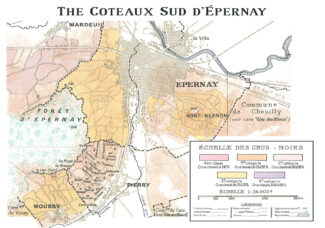
In the now-defunct ‘échelles des crus’ system, Pierry’s former rating of 90% makes it a Premier Cru village, the only commune in the Coteaux Sud d’Épernay to be so classified. (Its three neighbouring communes in the same area were rated 88%.) The terroir explains it, and a local saying is, “Pierry est Pierreux…” Pierry is stony, dominated by flint and chalk, and this minerality carries through to the wine.
Pierry’s current vineyard surface is 270 acres; half Meunier, 32% Chardonnay and 18% Pinot Noir. There are 125 vineyard owners in the commune.
 nv Champagne Pascal Lejeune ‘Figure de Style N°4 – OXYMORE’ Brut ($52)
nv Champagne Pascal Lejeune ‘Figure de Style N°4 – OXYMORE’ Brut ($52)
100% Meunier, 40% from the 2019 harvest, 60% reserve wine from 2018; the wine undergoes partial malolactic and 30% barrel ages with regular lees stirring. Dosage is to Brut level; 8g/l. The wine is plump and bold with rich notes of raspberry and stone fruit underlined by cassia and clove, all characteristics of the Meunier grape. 1255 bottles made. Disgorged February 2023.
Chardonnay in Pierry
Less than 30% of Champagne’s 84,000 low, densely-planted acres are Chardonnay, the grape that lords of Burgundian white wine. In cool climates north of Burgundy, however, Chardonnay demands well-favored sites and thrives best on the south- and east-facing chalky slopes of the Côte des Blancs south of Épernay.
 nv Champagne Pascal Lejeune ‘Figure de Style N°2 – ANAPHORE’ Blanc de Blancs Extra-Brut ($56)
nv Champagne Pascal Lejeune ‘Figure de Style N°2 – ANAPHORE’ Blanc de Blancs Extra-Brut ($56)
100% Chardonnay, all from the 2019 harvest; the wine ages in 30% oak barrels for ten months with regular stirring of lees. Dosage is to the level of Extra Brut, 4g/l, using homemade liquor distilled from the three grape varieties used in Champagne. The wine displays complex aromas of lime, sweet Meyer lemon and golden apple. 1235 bottles made. Disgorged February 2023.
Site-Specific ‘Parcellaire’: Village Vinay’s Lieu-dit ‘Les Longs Martins’
The vineyards of Vinay in the Vallée de la Marne, are located both on the slope southwest of Épernay formed by the valley of the stream Le Cubry, and also, in part, below the slope. The vineyards face south-south east, and Meunier is the most common grape variety found. The vineyards are continuous with those in Moussy and Saint-Martin-d’Ablois. The 365 acres are owned by 102 individual ‘exploitants.’
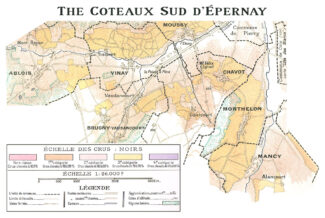
A ‘parcel’ is site-specific, synonymous with ‘lieu-dit’ as used in Burgundy—a named group of exceptionally emblematic vine. It is estimated that there are 84,000 of these named parcels throughout Champagne. ‘Les Longs Martins’ is one.
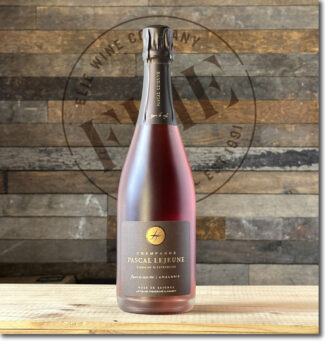 nv Champagne Pascal Lejeune ‘Figure de Style N°6 – ANALOGIE’ Rosé de Saignée Zéro Dosage ($74)
nv Champagne Pascal Lejeune ‘Figure de Style N°6 – ANALOGIE’ Rosé de Saignée Zéro Dosage ($74)
From the organic lieu-dit ‘Les Longs Martins’, this saignée is 100% Pinot Noir from vines that average 25 years old grown in clay, silt, sand and marne limestone. Maceration lasted ten hours, and no malolactic fermentation occurred, leaving the crisp acids intact along with notes of brioche, sweet pastry, vanilla, ripe forest berries and raspberry coulis. Only 638 bottles made. Disgorged December 2022.
The Bigger Picture: Villages Vinay, Moussy and Épernay
Of the 18 communes in the canton ‘Épernay-2’, the triad that produces grapes for Style N°1 each brings its own special spice to the party.
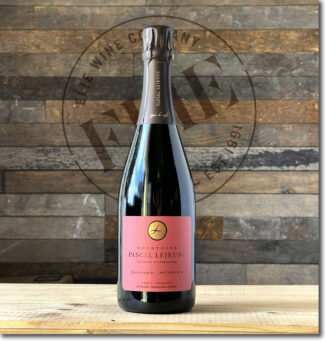 nv Champagne Pascal Lejeune ‘Figure de Style N°1 – METONYMIE’ Extra-Brut ($44)
nv Champagne Pascal Lejeune ‘Figure de Style N°1 – METONYMIE’ Extra-Brut ($44)
59% Pinot Meunier, 32% Chardonnay, 9% Pinot noir from vines that average thirty years old and grown on a south-southeast exposure. 39% of the harvest in this wine came from 2019, the rest from 2018; malolactic only touches the 2018. These grapes originate in the three communes of Vinay, Moussy and Épernay and provide beautifully focused aromas of apple, caramel, stones and minerals. 13,785 bottles made. Disgorged December 2022.
Notebook ….
Single Harvest vs. Vintage
In France, under Appellation d’Origine Contrôlée (AOC) rules, vintage Champagnes must be aged for three years—more than twice the required aging time for NV Champagne. The additional years on the yeast is said to add complexity and texture to the finished wine, and the price commanded by Vintage Champagne may in part be accounted for by the cellar space the wine takes up while aging.
On the other hand, a Champagne maker might prefer to release wine from a single vintage without the aging requirement; the freshness inherent in non-vintage Champagnes is one of its effervescent highlights. In this case, the wine label may announce the year, but the Champagne itself is referred to as ‘Single Harvest’ rather than ‘Vintage’.
Drawing the Boundaries of the Champagne Region
To be Champagne is to be an aristocrat. Your origins may be humble and your feet may be in the dirt; your hands are scarred from pruning and your back aches from moving barrels. But your head is always in the stars.
As such, the struggle to preserve its identity has been at the heart of Champagne’s self-confidence. Although the Champagne controlled designation of origin (AOC) wasn’t recognized until 1936, defense of the designation by its producers goes back much further. Since the first bubble burst in the first glass of sparkling wine in Hautvillers Abbey, producers in Champagne have maintained that their terroirs are unique to the region and any other wine that bears the name is a pretender to their effervescent throne.
The INAO defines the concept like this: “An AOP area is born of an alliance between the natural environment and human ingenuity. From that alliance comes an AOP product with unique, inimitable characteristics, a product so different that it complements rather than competes with other products, possessing a particular identity that adds further value.”
In 1927, the viticultural boundaries of Champagne were legally defined and split into five wine-producing districts: The Aube, Côte des Blancs, Côte de Sézanne, Montagne de Reims, and Vallée de la Marne. The CIVC (Comité Interprofessionnel du vin de Champagne), formed in 1941, decreed that everyone who wanted to plant vines and grow grapes to be used in the creation of Champagne had to be registered, and if you didn’t register back then, there is no out, even now. Originally, grape growing was not a profitable business and was an afterthought meant to utilize chalky slopes where grain would not grow. As a result, many farmers at that time did not register, and today, a tour along the Route Touristique de Champagne, you’ll come across unregistered fields that lie fallow between two registered vineyards.
… Yet another reason why this tiny slice of northern France, a mere 132 square miles, remains both elite and precious.
- - -
Posted on 2023.07.06 in France, Saturday Sips Review Club, Champagne | Read more...
Cidre With The Soul of Wine: Six French Artisanal Producers, in Normandy and Brittany, Make Intense, Complex, Effervescent and Tranquil Blends and Varietals From Native Apples (A Dozen-Bottle Sampler $199) + Cidre & Food Experience July 16 – RSVP
The grapes used to make wine are often unpleasantly sweet to eat; the apples used to make cidre apples are generally too tart and tannic to eat. The differences may snowball from there, yet the two beverages stroll down the same path toward an identical goal: An adult, fruit-based beverage whose ultimate success is based on the quality of the raw product and the skill of the creator.
In France, ‘cidre’ is the trademarked term for fermented cider from Normandy and Brittany; it is generally effervescent and contains about 3–5 percent alcohol. Sweetness varies; although it is mainly produced dry (Brut), the sweeter style (Doux) has its fans. Due to longer, more complete fermentation, Brut cidre is generally on the higher end of the ABV scale.
Dad joke: “Do the French have a 4th of July? Yes they do; right in between the 3rd and the 5th.”
Low in octane, effervescent, quaffable and refreshing, cidre offers a great alternative to beer for your outdoor summer tipple. Not only that, but because the original colonies were an apple country, too damp for barley, chances are good that the signing of the Declaration of Independence was accompanied by far more cider toasts than beer.
The ten cidres offered in this week’s 4th of July package are from six top-shelf producers. All 750 ml with one noted exception.
Cidre is Cidre
Throughout the world, ‘cider’ (as opposed to cidre) has no standard definition. In the UK, for example, just 35% juice content is required – even less in other countries – all of which can be from concentrate from virtually anywhere. Essentially, the focus of mass market ciders is homogeneity and manufactured consistency and the profit that comes from volume production.
In Normandy and Brittany, the ideology is much different. Using bittersweet and bittersharp apples rich in pectins and tannins and low in acid, cidre tends to be a farmhouse undertaking and the art of production involves a filtering process known as keeving; keeving allows the natural pectin of the apples turn to a jelly-like consistency in cold temperatures over a week, where it rises to the top of the fermentation vessel as the heavy solids filter to the bottom of the tank and the jelly at the top. The remaining juice in the middle of the tank is then slowly fermented at cold temperatures with small quantities of yeast for 3-6 months. The carbonation may be the result of a Champagne-like process or the artificial introduction of carbon dioxide at bottling.
Cidre ‘Terroir’: A Sense of Place
When fifteenth century Cistercian monks in Burgundy first began to document the difference in wine quality from various vineyards, they believed that it was a sign from above; that terroir expressed the variegated contours of God’s creation. Although in the modern era, the science of fermentation and a winemaker’s skill in applying and refined production methods have supplanted a monastic explanation for the differences in wine, the quest for a ‘sense of place’ remains alive and well.
In cider production—especially when compared to wine—terroir has traditionally had a less firm hold on the thought processes. For most of the world, cider is a year-long industrial manufacturing process, while in France, especially in controlled appellations, cidre is typically made seasonally, following the apple harvest. But like wine from grapes, cidre can be redolent not only of the fruit used, but of the locality where it’s grown; the soil, the aspect, the geography and the climate of the orchards.
This is precisely what winemakers call terroir.
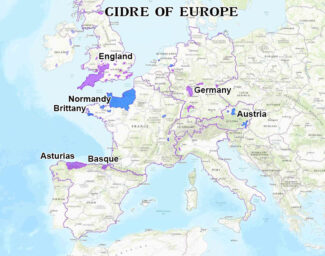
L’AOP (appellation d’origine portégée) ensures that the product comes from a specified geographical area and is fermented accordingly to a specific savoir-faire. For cidre, there currently four AOPs: Cornouaille, Cotentin, Pays d’Auge. Du Perche, a region in lower Normandy about ninety minutes from Paris, achieved its own AOP status in October 2020, and impressively, it is also the first fully organic cidre appellation in France.
Normandy
Normandy, which most of us associate with the D-Day invasion of 1944, gets a failing grade in being French: They tend to love Americans. They also love apples, and harvest nearly half a million a year, many (but not all) destined to be transformed into Norman Cidre. Throughout the regions of Calvados, Eure, Manche, Orne and Seine-Maritime, cidre is king, although the menu also includes world-class apple juice, pectin jelly and phenomenal apple-based pastries. In the 9th century, Charlemagne ordered more apple trees to be planted in the region, which is too far north and too sunshine-challenged for grape cultivation.

The Norman apple harvest begins in mid-September, when ripe fruit begins to fall from trees naturally. More than 200 varieties of apples are legally permitted; the most common is the Frequin Rouge, followed by distinctive Michelin and Muscadet de Dieppe.
Marie-Agnès Hérout
Maison Hérout
The Contenin Peninsula, part of the staging area for Operation Overlord (the codename of the Invasion of Normandy) pokes its nose far into the English Channel, and was chosen as a landing site for this very reason. Maison Hérout, known for producing some of the driest and most complex ciderss made anywhere, has seen many such incursions—the Hérout family tree goes back to the Vikings, who settled in this area around the ninth and tenth centuries. In fact, many Cotentin village names still flaunt Norse roots, like the beautiful Briquebec and Quettetot.
The Hérout estate is located near the town of Auvers, where apples thrive in a lush oceanic climate. The Hérout family began producing cidre in the 1940s; today, Marie-Agnès Hérout has taken over the farm and remains true to her heritage by producing some of the finest cidres available from this region. After picking, the apples are grated, macerated, and then pressed with the help of a rack press dating back to 1920, whereupon the juice is left to ferment for four to seven months, often in used Calvados barrels.

Marie-Agnès Hérout, Maison Hérout
© Hérout Cidres & Calvados
Marie-Agnès also continues the family tradition of planting apple trees for future generations and in 2000, began a campaign with the Syndicat de Promotion du Cidre du Cotentin to earn the region’s certification for Appellation d’Origine Contrôlée Cotentin status. In May of 2016, after 16 years of hard work and perseverance, the quest succeeded.
 Maison Hérout ‘Micro – Cuvée No 1’, 2019 AOP Cotentin ($23) – (Effervescent Brut – Cidre Bio 6.5% abv)
Maison Hérout ‘Micro – Cuvée No 1’, 2019 AOP Cotentin ($23) – (Effervescent Brut – Cidre Bio 6.5% abv)
A fizzy, bright gold organic cidre aged for three months in Calvados barrels (leading to the slightly higher alcohol content). It shows aromas of fallen lemon and earth with a lightly tannic, vibrant and compelling body that shows brisk dried peach, hay and parchment on the finish.
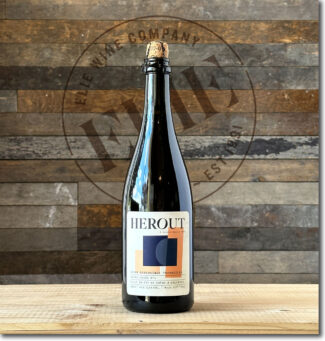 Maison Hérout ‘Micro – Cuvée No 1’, 2020 AOP Cotentin ($23) – (Tranquil – Cidre Bio 5.5% abv)
Maison Hérout ‘Micro – Cuvée No 1’, 2020 AOP Cotentin ($23) – (Tranquil – Cidre Bio 5.5% abv)
A still version of the above, made as an experiment that proved to be a widely popular success.
 Maison Hérout ‘Micro – Cuvée No 4’, 2020 AOP Cotentin ($23) – (Effervescent – Cidre Bio 4% abv)
Maison Hérout ‘Micro – Cuvée No 4’, 2020 AOP Cotentin ($23) – (Effervescent – Cidre Bio 4% abv)
No. 4 a new cuvée produced entirely from rare acidic apples grown in the Contentinois orchards with no addition of bitter or sweet apples. It is barrel-aged for several months before the ‘prise de mousse’ captures the sparkle. Notes of rich apple must, orange, honey, leather, and earth lead to a tannic, slightly bitter finish.
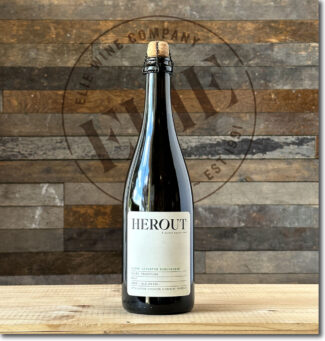 Maison Hérout ‘Cuvée Tradition’, 2020 AOP Cotentin ($18) – (Effervescent – Cidre Bio 5% abv)
Maison Hérout ‘Cuvée Tradition’, 2020 AOP Cotentin ($18) – (Effervescent – Cidre Bio 5% abv)
Nicely balanced between sweetness and acidity, the cidre is orange-yellow and delicately effervescent. It shows subtle aromas of butter and dried herbs behind the crisp apple.
 Maison Hérout ‘Amour’, IGP Cidre de Normandie ($8) – (Effervescent Brut – Cidre Bio 4.5% abv) – 3 bottles (330 ml)
Maison Hérout ‘Amour’, IGP Cidre de Normandie ($8) – (Effervescent Brut – Cidre Bio 4.5% abv) – 3 bottles (330 ml)
This is the only non-AOP cidre made by Hérout; it includes fruit that originates just outside the appellation and is exclusively bottled in 330 ml bottles. The juice is aged in a tank and bottled after about four months. Organic and slightly off-dry with the second fermentation occurring in the bottle; the cidre has an appealing low alcohol content. It is redolent of ripe apples in pastry, with hints of orange citrus, forest floor, bitter coffee bean and apricot on the finish.
Cyril Zangs
Cyril Zangs
Jazz-aficionado Cyril Zangs was a book sales rep in Paris before returning to his native Normandy and jumping into the cidre game with both feet. Of the 200 apple varieties approved for cidre making, he uses 69 of them, and in keeping with the natural wine movement, he ferments on native yeasts, unfiltered and without added sulfur.
After apple quality, Zangs says, it is all about process: “Each of our varieties possesses a particular characteristic (sweet, bittersweet, bitter, slightly acidic or sour) and are harvested from high-stem orchards which range from fifteen to sixty years old. We harvest by hand between early October and mid-December, when apples are the ripest. Our manual selection process ensures that only the best apples are picked—we then separate the apples by variety and store them in our barns to continue ripening for up to six weeks.”
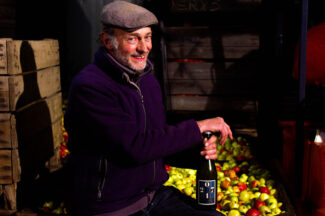
Cyril Zangs
What happens next? In his own words: “Once sorted to obtain the best flavor balance, the apples are grated to create a marc. This is put through to our hydraulic press and the juice is transferred to vats, and racked during the 6 months long fermentation process. It is left undisturbed apart from infrequent racking, or ‘soutirages’. The unfiltered cidre is bottled with no sulfites added and stocked horizontally for two to three months to capture the sparkle. The bottles are then stored on A-racks and regularly turned for three weeks; we then disgorge every bottle by hand, a process that naturally removes the sediment. Each bottle is topped up with the same disgorged cider, with nothing else added.”
 Cyril Zangs ’14 Glos’, 2019 IGP Cidre de Normandie ($27) – (Effervescent Brut – Cidre Bio 5.5% abv)
Cyril Zangs ’14 Glos’, 2019 IGP Cidre de Normandie ($27) – (Effervescent Brut – Cidre Bio 5.5% abv)
From the tiny commune of Glos in Calvados, Cyril Zangs produces this IGP cidre—IGP, for reference, is an EU quality classification that became valid in 2009; it means Indication Géographique Protégée and supplanted Vin de Pays. ‘14 Glos’ shows a creamy and rich texture, and displays notes of star anise, orange peel and unsurprisingly, bittersweet apple.
Guillaume & Thierry Desfrièches
Cidrerie Léon Desfrièches et Fils
‘Le Père Jules’
“In 1923, my father distilled his first Calvados”, says Léon Desfrièches, current head of the Desfrièches clan, and who has (since 1949) carried on the cidre and distilling traditions put in place by ‘Père Jules.’ In 1976, Léon’s eldest son Thierry joined him, followed by Guillaume, Thierry’s son, in 2002. Jules, Léon, Thierry and Guillaume—four generations of Desfrièches.
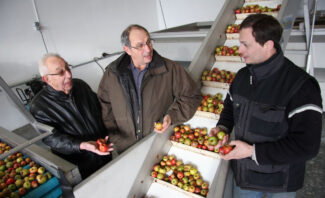
Léon, Thierry & Guillaume Desfrièches, Cidrerie Léon Desfrièches et Fils
Located in the Norman village of Saint Desir, the flagship cidre is made in honor of the late patriarch Jules. Now 85, Léon says: “I would have really liked my father sees what we have accomplished. As for myself, I hope I am like my Calvados: Serene and not afraid of aging with elegance, grace and roundness.”
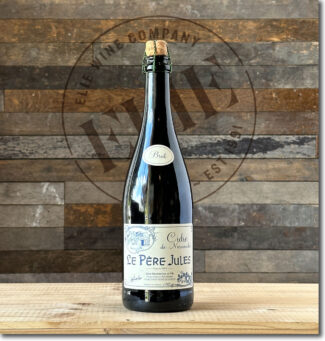 Cidrerie Léon Desfrièches et Fils ‘Le Père Jules’, IGP Cidre de Normandie ($16) – (Effervescent Brut – 5% abv)
Cidrerie Léon Desfrièches et Fils ‘Le Père Jules’, IGP Cidre de Normandie ($16) – (Effervescent Brut – 5% abv)
Very mature apple notes do homage to the Father Jules, showing white flowers and honey. Upfront in the first mouth, it develops an earthy, rich and fruity bouquet with interesting tannins for a long aftertaste.
Brittany
Like Normandy, the apple is emblematic of nearby Brittany; there are over 600 varieties grown and Breton farm cidre is the ultimate local drink. Orchards abound throughout the region, but sites around Dol-de-Bretagne, the Rennes and Vitré valleys, through the length of the Rance valley and the Vannes region are some of the most heralded. Of somewhat lesser importance to the economy, but still vital to the culture are Pommeau de Bretagne AOP and Eau de Vie de Cidre—a vague Breton answer to Calvados.
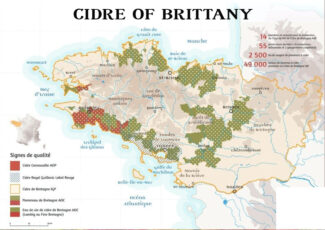
Like wine, Breton cidre celebrates outstanding vintages, and there are a number of officially sanctioned terroirs: Among them, Cidre de Cornouaille was the first product from Brittany to be granted an Appellation d’Origine Protégée. It comes from an area that covers 38 communities around Quimper that meet certain criteria such as hours of sunshine, rainfall or altitude. Cornouaille is a semi-dry cider made from 100% pure juice and has a golden color, very fine bubbles and a slight hint of bitterness.
Hervé Seznec
Cidrerie Manoir du Kinkiz
Hervé Seznec found his calling at an early age and has dedicated himself to produce world-class cidre. At the age of 19 he replanted his 74 acres of family orchards with 25 varieties of cidre-friendly apples. The core of his passion was the creation of natural cidre; as such, he uses no herbicides and allows indigenous plants and grass to grow between the trees.

Maugane & Hervé Seznec with their son Louis-Maël, Cidrerie Manoir du Kinkiz
“From the ladybugs that rid our orchards of insects,” he says, “to the almost mystical darkness of the cellars where our AOP Cornouaille cidre is aged in huge oak casks, we are making a genuine attempt to return to the hands-on, artisan production methods of our ancestors.”
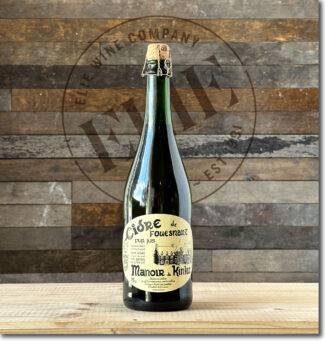 Cidrerie Manoir du Kinkiz ‘Cidre de Fouesnant’, AOP Cornouaille ($15) – (Effervescent Brut – 5% abv)
Cidrerie Manoir du Kinkiz ‘Cidre de Fouesnant’, AOP Cornouaille ($15) – (Effervescent Brut – 5% abv)
Fouesnant is a commune on the south coast of Brittany renowned for its orchards, regarded as the source of some of the very best Breton cidres. Hervé Seznec maintains, “Our Fouesnant cidre is assembled from old apple varieties, all harvested by hand. The apples are then sorted manually, and pressing is done only when the fruit is at its peak ripeness, from late September to December. The fermentation is slow and ends with a second, 2½ month bottle fermentation, giving the cidre its very fine bubbles. This cidre has a lot of personality and is well-defined by its roundness, persistent flavors of freshly cut apple, complemented by notes of butter and hazelnut.”
François Séhédic
Cidre Séhédic
A recipient of the Prix d’Excellence by the French Ministry of Agriculture for the quality of its product, Séhédic cidres are all certified organic. Located in western Brittany, only the traditional apples of the region are used in production. Although they may sound like a cornucopia of the weird and unpronounceable—Dous Moën, Dous Coët, Marie Menard, Kermerlen, Stang Ru, Trojen Hir and Mad Koz—they all contribute to a complex and age-worthy beverage.

François Séhédic, Cidre Séhédic
Cidre Séhédic has three apple orchards across 45 acres; some of the trees are more than 40 years old. All cidre is made without the addition of sugar, water or SO2. The Séhédic family has been producing cidre since 1950, with the second generation Marie Laure Séhédic and her husband Christian Danielou now running the operation.
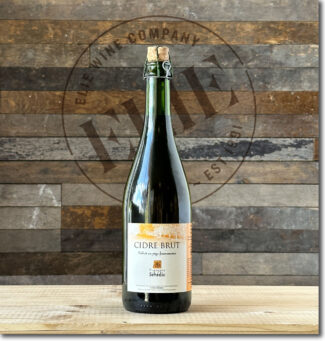 Cidre Séhédic ‘Fouesnant’, IGP Cidre de Bretagne ($15) – (Effervescent Brut – Cidre Bio 5.5% abv)
Cidre Séhédic ‘Fouesnant’, IGP Cidre de Bretagne ($15) – (Effervescent Brut – Cidre Bio 5.5% abv)
Produced from 30 heirloom varieties: Rich aromas of ginger and cinnamon spiced apple-sauce followed by a finely-textured palate; more savory stewed apple with an appealing acid-driven tartness on the finish, and lasting notes of baking spices and stony minerality.
Cédric Le Bloas
Cidrerie du Léguer
Du Léguer is located six hours directly west of Paris; so far that to go any further west, you’d get your feet wet. In this apple-friendly maritime region, Cédric Le Bloas farms 15 acres, raising artisan varieties like Marie Ménard, Jeanne Renard, Peau de Chien and the sharpest apples, Judor, Locart Vert, Rouget de Dol and Petit Jaune.
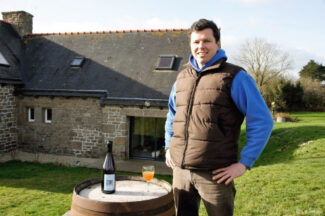
Cédric Le Bloas, Cidrerie du Léguer
©Le Trégor
According to Cédric, “Each cuvée is made according to my taste, however the same process is followed time and again. The trees are hand harvested three times between October and December, before further ripening, in crates before pressing up to four weeks later. The cidres go through two ferments: the first lasting five months before bottling, followed by a three month fermentation in bottle. The cidres are bottled with no sulfur, just pure juice, naturally sparkling and spontaneous, no collage, only racking and filtering when required.”
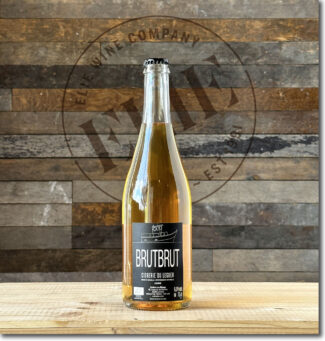 Cidrerie du Léguer ‘BrutBrut’, IGP Cidre de Bretagne ($17) – (Effervescent Brut – Cidre Bio 6.8% abv)
Cidrerie du Léguer ‘BrutBrut’, IGP Cidre de Bretagne ($17) – (Effervescent Brut – Cidre Bio 6.8% abv)
Sourced from two different orchards, the cidre is made with an apple blend that is 5% bitter, 50% bitter-sweet, 25% sweet, 20% sharp. As with all of Cédric’s cidres, it is made from apples that have fallen and were allowed to further ripen in wooden crates. Cédric uses the old-school process of “keeving” to clean the musts (thus they are not filtered) and all fermentations are natural. The cidre is woody and vinous, showing aromas of dry apples, mild barnyard notes and earth along with a touch of vanilla.
Notebook ….
The Styles of Cidre
At Elie’s, we confess to being in the neophyte stage of French cidre appreciation, and so in interest of broadening our horizons, we scratched the surface of a subject so vast we’d need a separate newsletter to do it justice.
Still, there is a primer course that can offer a little insight into one aspect of it: Style.
The dream state of most French cidre is rich, lush, amber and full of bittersweet apple character; most are low in acidity but well-balanced between the full-bodied fruitiness and tannin. They range from dry to sweet. ‘Fermier’ is farmhouse cidre made where the apples are grown (similar to ‘mis en bouteille au château’ in Bordeaux) and ‘bouché’ refers to the cork stopper, often caged when the cidre is effervescent.

Cidre can be made still or sparkling, desert-style or fortified, or even co-fermented with hops or other fruit juices. So far, the cidres that have impressed us the most have been made from pure, farm-pressed apple juice and electrified with a natural mousse created in the bottle.
It’s a delightful journey of discovery to the style that best suits your palate, but to take the challenge most authentically, cidre should be sipped from wine glass. Traditionally, country folk could not afford glass, so they used ceramic or crockery. The favored receptacles looked like small bowls known as ‘bolées.’
Cidre & Food Experience …
Normandy Invasion: Cidre Storms Ashore at Coney Island
Join us for a Cidre Tasting at Nicky D’s Coney Island in Royal Oak! On Sunday, July 16, between 5 pm and 7 pm, we will sample premium cidres from Maison Hérout, Cyril Zangs (Normandy) Manoir du Kinkiz, Cidrerie du Léguer (Brittany).
Afterward, stay for dinner with a bottle of Cidre or two to pair with all-American Nicky D’s.
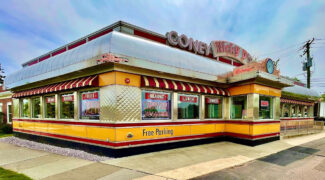
During the tasting, Nicky D’s will be closed to the public. The featured Cidres will be offered for sale to take home or uncork to enjoy with dinner at Nick D’s during the tasting hours. Regular Nicky D’s Coney Island menu will be available to order choice of meal and pay the diner directly for a Cidre & Coney food experience. RSVP is required (Only at 248 398 0030).
Nicky D’s Coney Island in Royal Oak at 32657 North Woodward Avenue.
- - -
Posted on 2023.06.30 in Cidre, France, Wine-Aid Packages | Read more...
Five Beaujolais Producers Channel Morgon in All Its Glorious Complexity, All Insanely Easy to Drink (8-Bottle Sampler $295)
Join Us for Saturday Sips: The Originality of Morgon
Come as you are; come any time that’s convenient for you during our business hours to sample selection from this week’s selections. Our staff will be on hand to discuss nuances of the wines, the terroirs reflected, and the producers.
In 1918, when John Keats wrote “… Can burst joy’s grape against his palate fine …?” he was not referring to Beaujolais. But he should have been.
Complexity and ease combined; in slightly less poetic terms, that describes bucolic Beaujolais to a ‘t’. And that ‘t’ stands for tradition, as the best of the winemakers in the region are enjoying a renaissance of their roots, producing non-manipulated, non-interventionist wines that reflect the granitic glories that Gamay brings to an odd appendage of Burgundy which is utterly un-Burgundian in grape, style, or intent.
The intrinsic joy wafting from a glass of Beaujolais is unmatched in any other winemaking district in the world. This week, join us in celebrating this delightful quirk of hedonism with a selection from Morgon, among the easiest and most complex of Beaujolais Crus and the ideal wine for a cool summer break.
The Twelve Appellations of Beaujolais
Despite being wed to a one-trick pony named ‘Gamay’, the variety of the terroir in Beaujolais is astonishing. Geologists have identified more than three hundred individual soil profiles—in the south, clay-rich soils (often mixed with chalk) predominate throughout rolling hills, to the north, where the soil is sandy and granitic, Beaujolais has carved itself into 12 appellations. The most generic, located mainly between Arbresle and Belleville, makes ‘Beaujolais’ the largest of the AOPs. ‘Beaujolais Villages’ is found in the northern part of the vineyards and includes 38 villages. The steep vineyards, facing east-south-east, surround the ten famous Beaujolais Crus of the northern half. From north to south, they are St-Amour, Juliénas, Chénas, Moulin-à-Vent, Fleurie, Chiroubles, Morgon, Régnié, Brouilly, and Côte de Brouilly, each with its own personality and charm.

The Expression of Morgon’s ‘Rotten’ Terroir
Overlooked by Mont du Py, Morgon is the second largest of the Beaujolais crus after Brouilly, and in the heart of it lies the appellation’s most famous terroir, the Côte du Py. Sitting atop an extinct volcano at the highest point in the region, Py contains the oldest soils of Beaujolais, dating back hundreds of millennia.
Morgon’s neighborhood is upscale; surrounded by Fleurie, Chiroubles, Brouilly and Régnié, and slightly under five square miles in total, it is an epicenter for the terroir that Gamay loves best. While all ten Crus feature some granitic soil, Morgon is granite-land. Not that, but it is a unique type, the blue-tinged version known as andesite. And the only rock that Gamay loves more is iron-rich schist, which in Morgon also has in spades; decomposed and referred to by locals as ‘roches pourries’—rotten rock.

As in much of Beaujolais, Morgon vineyards are protected from cold northwesterly winds by the hills immediately to the west. Instead, warm, dry ‘foehn’ winds develop on the eastern slopes, drying the vineyards after rain and helping to prevent fungal diseases. Otherwise, the wide, shallow valley of the Saône River offers no topographical barriers to unfettered sunlight and vines bask in plentiful sunshine during the growing season. Heat is moderated by cooling influences from the Mediterranean, allowing for the retention of acidity while phenols and sugars evolve. As a result, Morgon wines are denser than those made in much of Beaujolais, displaying ripe cherry and dark fruit characters and a fleshy, juicy texture. Morgon wines age so well that the region’s name is often used as a verb to describe a cellar-worthy wine, saying ‘il morgonne’, or ‘it Morgons.”
Clos de Mez
Marie-Élodie Zighera has roots in the past; a metaphor that is not really a metaphor since her oldest vines were planted so long ago that when France entered the First World War, they were already producing.
“Vines have been in my maternal family for four generations,” she says. “The grapes they grew were delivered to the cooperative cellar by my grandmother and mother up until I arrived at the domain as a winegrower. However, this did not deter my grandmother or mother from taking great care of our 17-hectare vineyard. At that time, I was living in Paris with my family and we would come to Fleurie for the holidays. I used to love this time so much, being in close contact with nature.”

Marie-Élodie Zighera, Clos de Mez
With a drive to turn this love into a vocation, Zighera studied viticulture; after graduation, she found work in a number of vineyards. Among them was Clos Vougeot, where she concluded that she could not hope to make such wines from her family holding.
Then came the eureka moment: “A professional tasting of old vintages was held and I was invited to attend during my work placement at Vougeot. With a Morgon 1911, the unanimous opinion was that it was magnificent wine; that it had aged as well as a Burgundy. I finally knew what type of wine I wanted to make and most importantly I realized it was possible. I had another strong advantage too: the freedom to imagine without guidelines being imposed. I set up my business in 2006 and named the domain Clos de Mez, a shortened version of my name.”
Zighera makes wine in Fleurie and Morgon, where the average age of vines in her plots is 45 years. Her Fleurie holding outlines a hilly landscape, where Gamay vines follow the contours of the slopes of Fût d’Avenas, the mountain passes of Durbize, Labourons and Raymont Peak. She says, “Legend recounts that a Roman legionary once passed through here, leaving his name to the site and to the village. Our vines in Fleurie are found in the southern part of the appellation, bordering Morgon. Facing South/South-East, they stand at an altitude of about 300 meters. The soils of Fleurie La Dot and Fleurie Mademoiselle M, which originate from acid rock, are deep and provide good drainage. Rose colored granite is widely predominant here and is found in the form sand called saprolite.”
 Clos de Mez, 2017 Morgon-Château Gaillard ($32)
Clos de Mez, 2017 Morgon-Château Gaillard ($32)
Chateau Gaillard is a lieu-dit that passed to Marie-Élodie from her grandmother. Adjacent to the border of Morgon where it borders Fleurie, the plot of 70 year old vines with very low yields giving a wine of great depth and aging potential. Grapes are sorted as they are picked in each plot of the vineyard; the grapes are moved to the vats by a system of gravity where whole-bunch pre-fermentation maceration at cold temperature is carried out for few days, followed by alcoholic fermentation interspersed by cap-punching and pumping-over. The wine offers ripe, black-fruit character with lively acidity and an expansive finish.
Mélanie et Daniel Bouland
Daniel Bouland has been called reclusive and solitary—he has also been called the best artisanal vigneron in Beaujolais. When collectors compare him to more flamboyant regional names like Foillard and Lapierre, it is always favorably, at least in part because of his obsessive respect for micro-terroirs—in French, ‘pur’ terroir. Working with fewer than twenty acres of impeccably cultivated vines in the Morgon lieux-dits of Corcelette, Bellevue and Les Delys, plus small parcels in Chiroubles and Côte de Brouilly, Bouland’s wines are approachable upon release, but created with such a backbone that his terroir’s mineral nuances will continue to become more pronounced with five or more years in the cellar.

Daniel Bouland in Morgon’s lieu-dit ‘Les Delys’ with Gamay vines planted in 1926.
With the success of Cuvée Mélanie, named for Daniel Bouland’s daughter, Bouland has added her name to current bottlings beneath the name ‘Mélanie et Daniel Bouland’, possibly in advance of the younger Bouland ultimately taking charge.
 Mélanie et Daniel Bouland ‘Vieilles-Vignes Sable’, 2021 Morgon–Corcelette ($43)
Mélanie et Daniel Bouland ‘Vieilles-Vignes Sable’, 2021 Morgon–Corcelette ($43)
Corcelette is a south-east facing climat where the soils are sandy pink granite and the vines are between 60 and 75 year old vines. Made famous by the iconic Jean Foillard, the roster of vintners who today bottle a Corcelette reads like a who’s who of Beaujolais masters. Brooding and filled with mineral piquancy, the wine bursts with wild fruit including slightly dried black cherry, blackberry, cranberry and pomegranate that digs in with powdery, penetrating tannins.
 Mélanie et Daniel Bouland ‘Sable’, 2021 Morgon–Bellevue ($39)
Mélanie et Daniel Bouland ‘Sable’, 2021 Morgon–Bellevue ($39)
Bouland’s Bellevue soils are split into two named cuvées—one for the sand (Sable) and one for the stones (Cailloux). “These two parcels are only separated by a small track,” says Bouland. “but the soil is completely different. Not only does the weathered sandy granite differ from the Cailloux parcel, but the slope is steeper, and the 40-50 years old vines are on a specific low-yielding rootstock called Vialla—a stock well adapted to these soils.”
Opening in the glass with aromas of raspberries, plums, spices and smoke, the 2021 Bellevue is fleshy and succulent with a core of tangy, acidic fruits, mulberry especially, shored up by sweet spices, licorice and rose petals.
 Mélanie et Daniel Bouland ‘1926’, 2021 Morgon-Les Delys ($48)
Mélanie et Daniel Bouland ‘1926’, 2021 Morgon-Les Delys ($48)
Like Bellevue, the lieu-dit Les Delys is part of the larger climat Corcelette, down the slope and located right where Domaine Chamonard sits. The vines were planted in 1926 in the deep granitic sand typical of Les Delys, bringing roundness and texture to the wines. It was aged in concrete and bottled in August, 2022. The 2021, still in the blush of youth, unfolds with primary aromas cassis, black raspberry, red plum, mint and tarragon.
 Mélanie et Daniel Bouland , 2021 Morgon-Pré Jourdan ($39)
Mélanie et Daniel Bouland , 2021 Morgon-Pré Jourdan ($39)
Pré Jourdan is a lieu-dit that has only been producing for Bouland for a few years; near Fleurie, the vines are over 70 years old. One of the last cuvées to be bottled this year, it shows blackberries and spices mingled with notes of rose petals, violets and potpourri.
Domaine des Terres Dorées
With a name from a fairy tale (‘House in the Land of the Golden Stones’), Domaine des Terres Dorées is a 150-acre vineyard located in Charnay, just north of Lyon. Owner/winemaker Jean Paul Brun is a champion of ‘old-style Beaujolais’, and by ‘old’, he means an era before pesticides and herbicides, and especially, a time when native yeasts alone were used to ferment.
He says: “Virtually all Beaujolais is now made by adding a particular strain of industrial yeast known as 71B. It’s a laboratory product made in Holland from a tomato base, and when you taste Beaujolais with banana and candy aromas, 71B is the culprit. 71B produces a beverage, but without authenticity or charm.”

Jean-Paul Brun, Domaine des Terres Dorées
Brun also insists that Beaujolais drinks best at a lower degree of alcohol and that there is no need to systematically add sugar to the must (chaptalize) to reach alcohol levels of 12 to 13%.
“My Beaujolais is made to be pleasurable,” he maintains. “Light, fruity and delicious, not an artificially inflated wine that is only meant to shine at tasting competitions.”
“The emphasis is not on weight, but on fruit,” he adds. “Beaujolais as it once was and as it should be.”
 Domaine des Terres Dorées ‘Tirage au Domaine’, 2021 Morgon Côte du Py – Javernières ($30)
Domaine des Terres Dorées ‘Tirage au Domaine’, 2021 Morgon Côte du Py – Javernières ($30)
The historic Morgon lieu-dit of Javernières sits at the foot of the Côte du Py, where soils are much heavier and stickier with deep, iron-rich red clay versus the more schistous ‘rotten rock’ further up the hill. Exposures are also more easterly; the wines tend to be dense but soft and more red-toned and elegant versus the darker, more muscular wines of the Côte du Py. Brun’s three-acre plot produces a wine that shines with Damson plum, raspberries, sweet spices and licorice.
Guy Breton
Guy Breton took over the family domain from his grandfather in 1986—up until then, the family had been selling their fruit to the large cooperative wineries which dominated the region. The rise of imported yeast cultures to impart flavor and aroma, the use of high-tech carbonic maceration and the widespread commercialization of Beaujolais Nouveau played hell with the region’s reputation, and to much of the wine world, Beaujolais came to be seen as one-dimensional, lacking any expression of the native terroir.

Guy Breton
Following the example of traditionalist Jules Chauvet, Guy and three other local vignerons initiated a ‘back-to-nature’ movement, calling for a return to the old practices of viticulture and vinification. This began with old vines and refusing to use synthetic herbicides or pesticides. They harvested late and sorted rigorously to remove all but the healthiest grapes, adding minimal doses of sulfur dioxide or none at all, and refusing both chaptalization and filtration.
“The end result allows my wine to express itself naturally,” he says, “without make-up or plastic surgery: rustic, spicy, loaded with schist minerals and at the same time, refreshing and deep-down delicious.”
 Guy Breton, 2020 Morgon ($45)
Guy Breton, 2020 Morgon ($45)
Although 2020 was one of the hottest growing seasons on record, Guy Breton draws juice from 80-year-old vines to produce this succulent, floral, breezy wine; a dose of relief from the sundogs of summer. Managing elegance and lightness behind a rich backbone of fruit, the wine shows wild strawberry tartness and crystalline, balancing floral notes and an appealing softness that is evidence of Breton’s reputation among the Gang of Four who are ushering Beaujolais into a new era.
Domaine J. Boulon
A half hour’s drive south of the Mâcon, the village of Corcelles-en-Beaujolais has been the Boulon family home since the 1850s. Hugo and Ludvine Boulon are the seventh generation of the family to run the estate’s holdings in the Beaujolais Cru villages of Morgon, Brouilly and Moulin à Vent, a total of 67 acres.

Hugo, Ludivine, Jacques and Françoise Boulon, Domaine J. Boulon
Having sold grapes to the local co-operative for nearly a century, Joseph Boulon began to domain-bottle in 1973. His son Jacques, and Jacques’ wife Françoise were responsible for the subsequent growth and modernization of the estate. Since 2005, their daughter Ludivine and her husband Hugo have carried the torch in the production of these delightfully bright wines.
 Domaine J. Boulon, 2019 Morgon ($18)
Domaine J. Boulon, 2019 Morgon ($18)
The grapes selected for this heady, concentrated wine come from vineyard plots throughout the family’s old-vine holdings where vine age averages 85 years. It’s fermented and aged entirely in glass-lined concrete vats, preserving the freshness and nuance of the old-vine fruit and shows luscious tones of black currant and bramble berries behind floral aromatics and a spicy finish.
RECENT ARRIVAL
Gamay’s Strong Presence in Touraine, Heart of The Loire Valley
The exception to prove the rule: Gamay showcases best in Beaujolais, except when it doesn’t. In the Loire Valley, Gamay comes in two colors: red and rosé. The latter are found mostly in Anjou and Saumur, whereas in Touraine, Gamay is essentially is a stand-alone red or used or in blends (Malbec, around and upstream of Amboise, or Cabernet). Three other appellations use Gamay as the main input in their production of red wines: Valençay (at the crossroads of Berry, Sologne and Touraine), Châteaumeillant, in Berry and Touraine Mesland (around Chaumont-sur-Loire, near Blois). Loire Gamay is similar, but notably unique when tasted alongside Gamay from Beaujolais; Touraine terroir tends to bring out a muskier side of the grape with forest-floor notes of fern and capers.

Domaine Marie Thibault
“I grew up in the Loire Valley, but unlike many vignerons working in the Loire, I did not come from a winemaking family,” says Marie Thibault, adding, “But also unlike many of them, I have degrees in both biology and oenology.”
Marie Thibault began making wine in the early 2000s, working for a time with François Chidaine in Montlouis, where she fell in love with Chenin Blanc. In 2011, she founded her own nine acre estate on a single windy slope in Azay-le-Rideau, a lesser known commune of Touraine. She immediately converted to organics and has been certified with Ecocert since 2014. Among the natural elements in her vineyards is the flock of two dozen ewes that graze between the vine rows during the autumn; every ten days, they are penned inside a new hectare to keep the soil naturally fertile and the grass clipped.

Marie Thibault, Domaine Marie Thibault
©Jean-Yves Bardin
“My vineyard is small, but the soils are extremely varied and as such, so are the grapes I grow. I work with Côt (Malbec), and have a special love for Gamay, Grolleau, Chenin Blanc and Sauvignon Blanc. Most of my vines are at least 50 years old. I compensate for small production by purchasing from organic estates nearby, especially those grown by my family.”
 Marie Thibault ‘Les Grandes Vignes’, 2018 VdF Loire-Touraine ‘Gamay’ ‘natural’ ($41)
Marie Thibault ‘Les Grandes Vignes’, 2018 VdF Loire-Touraine ‘Gamay’ ‘natural’ ($41)
Thibault’s unique lens on Gamay is seen in this example produced from 50+ year-old vines she discovered growing adjacent to her plot on flinty silex soil. The vines were untrained and un-trellised, and harvest was exceptionally labor-intensive. She allows a 10-month maceration in order to shows off the Gamay’s savory side, with crisp rhubarb, earthy red berry notes and fine-grained, well-integrated tannins showcased.
- - -
Posted on 2023.06.23 in Morgon, Touraine, France, Beaujolais, Wine-Aid Packages | Read more...
Second Wines from 24 of Bordeaux’s Top Estates Offer Exceptional Quality at Lower Prices Making Them Attractive For Early Drinking and Father’s Day Gift + 6-Pack Cab-Sauv Showcase Selection ($395)
Join Us for Saturday Sips: Second Wines, Second Thought
Come as you are; come any time that’s convenient for you during our business hours to sample selection from this week’s selections. Our staff will be on hand to discuss nuances of the wines, the terroirs reflected, and the producers.
Rather than shedding tears, Bordeaux adds tiers—and classification is what Bordeaux is all about. While the Grand Vin is expected to be the A-game of any château, with technological advancements and an increasingly warm climate, the price of these top-shelf wines has risen with the temperature, and quality is ensured by an ever more rigorous selection of grapes on the sorting table.
Second wines—a tradition begun by Château Margaux in the 17th century—were the logical place to establish grapes deemed unfit for inclusion in the Grand Vin. And since the terroir in which they were grown was often similar, and occasionally identical to the first wines (and generally made by the same vigneron), it stands to reason that the great estates would release these ‘little brother wines’ under some version of their famous name.
This name-game association has a downside, of course: As the prices for a château’s main bottling rose, they found that they could easily command more for second wines as well, and inexorably, these began to be priced beyond the reach of many consumers as well. Especially in the Médoc, the cost of second wines crept up to a price point once paid for the first. Some châteaux found a solution in producing third wines, and although fourth wines are not unheard of, the bulk of a harvest that does end up in one of the three is generally declassified and sold to négociants.
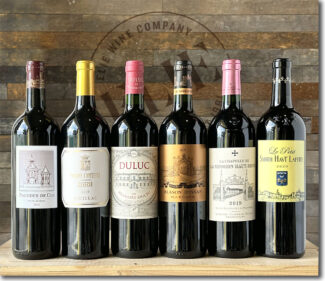
Left-Bank Cab-Sauv Showcase with 6-Pack Selection ($395)
This Father’s Day, there is need to let the old man play second fiddle; a table graced with Second wines keeps him first in our heart. We’ll package this remarkable set in a handsome wooden box; it contains six selections from the following 24 wines.
OR
Buy the whole lot, all 24 Bottles, at a deeper discount for $2100, average $87.50 a bottle.
Price Pressure
As mentioned above, any viable business must weigh the needs of customers with their ability to pay, and the cachet associated with First Growths in Bordeaux is so encompassing that maintaining quality outweighs any need for quantity. It’s fair to suggest that for Bordeaux’s most heralded names, second wines are not a bid for publicity, but exist as a vital—and growing—revenue source. In 2010, for example (one of the best years for quality in decades) only 40% of the harvest went into Lafite’s first wine while a full 55% went into Carruades.
In contrast is Château Léoville Barton, who uses about 80% of their grapes for their Grand Vin, a Deuxième Cru. It’s a somewhat unique philosophy, says proprietor Anthony Barton: “We produced some jolly good wines doing things that in the current era would make our oenologist scream. Grapes into one big wooden barrel, crushed by foot in the field. But we made vintages such as 1945 and 1947. The other day I found an invoice for a fiddler who played while we stomped. Now you need velvet gloves for touching the grapes.”
Precise Vinification
Other estates, like Château Pontet-Canet, express a goal of vinifying 100% Grand Vin—a once unreachable star brought closer to earth by advancing technology and better land management. Beyond the biodynamic movement which is sweeping most winemaking regions in the world, Picovale weather stations are increasingly allowing vineyard managers to be proactive in the face of incipient bad weather, especially the dreaded springtime frosts. Experience, formerly the sole means of measuring phenolic ripeness and knowing when to harvest, has guided winemakers in Bordeaux since Roman times, but technology can remove the last traces of guesswork. Brimrose Le Vigneron AOTF-NIR Analyzer calculates and levels of sugar and acidity, bringing groundbreaking insight to the exact time winemakers should be harvesting.
These innovations allow a much more precise product to be bottled, and with the increasing quest for perfection, they are becoming increasingly indispensable, even in a region where tradition is sacred.
Harnessing Young Vines
Older vines are a legacy among wine growers, and when they reach a certain age, it becomes a point of pride. With an expansive root system and substantial permanent wood, these vines have adapted to their environment and are more resilient to drought and extreme weather. At the same time, they are more prone to disease and damage and produce increasingly smaller yields, and at some point, it no longer makes sense to keep them in commercial production. Maintaining a sustainable economic vineyard means replanting, and in Bordeaux, mature vines are often replaced after about 35 years. After that, it takes between ten and twenty years for a vine’s fruit to reach potential, and a natural outlet for grapes from younger vines is an estate’s second and third wines, where it is expected that the tannins will be a bit coarser and less integrated, but which will mature more quickly than Grand Vin bottlings.
Access to Quality
In fact, the idea that second wines can be enjoyed earlier than their big brothers is one of their main selling points. Great wines may take twenty years to reach their apex; a lesser version may deliver its entire package upon release, or at least, within a few years. Second wines may come from the same winemaker who makes the first, and even the same plots of ground, but the philosophy is different. By using slightly less newsworthy fruit in the second wine rather than the first, the quality of the Grand Vin is expected to remain high; the alternative may to produce more Grand Vin with lesser grapes, but which would consequentially, be available at a lower price. It’s an endless balance, well summarized by Anthony Barton: “While I don’t believe that you can go too far in the search for perfection in wine, you can certainly go too far in search for profits.”
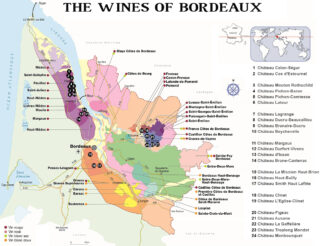
Saint-Estèphe: Fleshy With Exceptional Backbone, Lift and Energy
Situated at the northern end of the Haut-Médoc, just south of the Médoc appellation that runs north to the Pointe de Grave and the Bay of Biscay, Saint-Estèphe is one of Bordeaux’s famous ‘Left Bank’ appellations. With 3000 acres under vine, Saint-Estèphe accounts for roughly 8% of the vineyard area of the wider Médoc.
Because Saint-Estèphe is marginally further from the gravel-bearing waters of the Garonne, the terroir is less stony than that found in the southern part of the Haut-Médoc. Instead, heavy clay and a limestone base dominate this area, resulting in poorer-draining soils, delayed ripening and higher acidity levels in the wines. These factors tend to favor Merlot over Cabernet Sauvignon, which performs better on clay-rich soils.
Château Cos d’Estournel
Cos d’Estournel is found amid undulating terrain at the heart of the Médoc, and the name itself was chosen by the original owner, Louis Gaspard d’Estournel, to commemorate the rolling landscape on which the estate stands: ‘Cos’ is an old dialectical word for hill.
The estate’s vineyards extend over 170 acres divided into 30 parcels, 60% Cabernet Sauvignon and 40% Merlot, with minor cultivation of Cabernet Franc and Petit Verdot. The annual production is typically 32,000 cases.
 Château Cos d’Estournel ‘Pagodes de Cos’, 2016 Saint-Estèphe ($75)
Château Cos d’Estournel ‘Pagodes de Cos’, 2016 Saint-Estèphe ($75)
2016 Les Pagodes blend is precise: 50% Cabernet Sauvignon, 46.5% Merlot, 3% Petit Verdot and 0.5% Cabernet Franc. A seriously dark showcase for the region’s typical flavor profile, black cassis, graphite, black cherries and spicy smoked meat, showing the power of St-Estèphe clay.
*click on image for more info
Château Calon Ségur
Calon-Ségur is recognizable by the heart on the label, a result of the original owner Marquis de Ségur (who also owned Lafite and Latour) declaring, “My heart belongs to Calon.” Presumably, the current owners, the Gasquetons, feel the same way: Their vines are planted on deep gravel beds interspersed with sand and clay, and the Grand Vin has a higher-than-usual percent of Cabernet Franc, up to 15%.
 Château Calon Ségur ‘Le Marquis de Calon Ségur’, 2019 Saint Estèphe ($44)
Château Calon Ségur ‘Le Marquis de Calon Ségur’, 2019 Saint Estèphe ($44)
The 2019 blend of the estate’s second label is 56% Cabernet sauvignon, 35% Merlot, 7% Cabernet Franc and 2% Petit Verdot. Vinified and aged in 30% new oak, it has developed a following based on its own merits. It can age for a bit, but is fine now; it shows brambly red and black fruits, damp earth and leafy herbs with floral undertones just beginning to develop.
*click on image for more info
Saint-Julien: Delicate Perfume, Finesse and Solid Constitution
Great things come in small packages, especially when big money is involved. The smallest of the major Médoc appellations (under four square miles), Saint-Julien also boasts an astonishing pedigree: Fully 95% of the appellation sits on classified acreage. Key to the desirability of the wines produced here is the seamless fusion of concentration and elegance; the wines are of a style historically referred to as masculine, though more in the mode of a Knight Templar than a brawny warrior. This blend of finesse and fortitude comes in part from the preponderance of gravel in the best vineyards, allowing natural drainage in the wet years, radiating warmth in cool vintages, extending the growing season and allowing vine roots to extend deeply into the earth.
Château Branaire-Ducru
The deep gravel terroir (interspersed with clay deposits) that make up Ducru’s 150 acres vineyard is planted to 65% Cabernet-Sauvignon, 28% Merlot, 4% Petit Verdot and 3% Cabernet Franc, nearly the same as it was at the time of the 1855 Classification. Originally a part of Château Beychevelle, the family-owned estate today relies on a sustainable viticulture system; traditional plowing between the rows depending on soils and the behavior of the vines. Trellising and canopy management are done according to vineyard density and soil composition while vineyards are planted with vines selected in the old vineyards and produced in the nursery. Winemaker Jean-Dominique Videau says, “We are fortunate to be situated in the ‘golden triangle’ of Saint-Julien terroir. Super Second powerhouses are a mere five-minute walk from our humble Fourth Growth estate, and we are capable of producing excellent wines.”
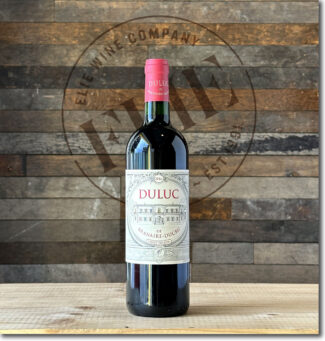 Château Branaire-Ducru ‘Duluc de Branaire-Ducru’, 2016 Saint-Julien ($49)
Château Branaire-Ducru ‘Duluc de Branaire-Ducru’, 2016 Saint-Julien ($49)
Duluc is the second wine of the château, born in 1998 and composed mainly of grapes from vines under 15 years old. Its goal is to be ‘as accessible as possible.’ The wine is fresh and lively, showing rich plum compote and blackberry reduction notes laced with licorice and violet.
*click on image for more info
Château Lagrange
Following its purchase by Suntory, the Lagrange estate expanded beyond Saint-Julien, bottling Haut Médoc and Bordeaux Blanc, and today, rather remarkably, it is the largest of the great Crus classified in 1855. With plantings that are 68% Cabernet Sauvignon, 25% Merlot and 7% Petit Verdot, the estate has undergone significant improvements over the past few decades; under the direction of Marcel Ducasse, Château Lagrange’s directeur from 1993 to 2007, the vineyard grew from 118 planted acres to 340 planted acres. The vine density was also increased as more than 100,000 new vines were added. In 1985, the new owners also began producing their second wine, ‘Les Fiefs de Lagrange.’
 Château Lagrange ‘Les Fiefs de Lagrange’, 2019 Saint-Julien ($38)
Château Lagrange ‘Les Fiefs de Lagrange’, 2019 Saint-Julien ($38)
Under enologist Eric Boissenot, ‘Les Fiefs’ is soft, supple and easygoing, showing bright red cherry, mint, blood orange, spice and rose petal. 53% Cabernet Sauvignon, 44% Merlot and 3% Petit Verdot.
*click on image for more info
Château Beychevelle
The prestigious Cru Classé Beychevelle has feet in many centuries; the elegance of its classical architecture makes it a jewel in the crown of the Médoc which has marked the economic, political and cultural life of Bordeaux since the reign of Henry III. In February 2011, the château took on new owners when Suntory (along with Pierre Castel of the massive Castel Frères) purchased the estate. Planted on deep Garonne gravel, vines cover more than 220 acres planted with 56% Cabernet Sauvignon, 40% Merlot, 3% Petit Verdot and 1% Cabernet Franc.
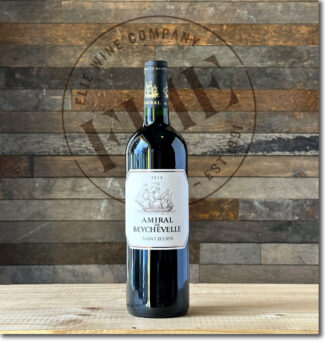 Château Beychevelle ‘Amiral de Beychevelle’, 2018 Saint-Julien ($53)
Château Beychevelle ‘Amiral de Beychevelle’, 2018 Saint-Julien ($53)
2018 checks in at 63% Cabernet Sauvignon, 32% Merlot; the remaining Cabernet Franc comes from the younger vines of the estate and slightly more sandy soils. The wine provides an array of blueberries, black cherries, tobacco and spring flowers with a savory, balanced structure.
*click on image for more info
Château Ducru-Beaucaillou
There’s more to the name than a lovely rhyme; it encapsulates both the original owner and the timeless terroir. Bertrand Ducru purchased the estate in 1795, where the vineyards are peppered with quartz pebbles, forcing the vines to struggle for nutrients. In French, ‘beaux cailloux’ means ‘beautiful pebbles.’ This results in reduced yields and small, concentrated grapes that are packed with nuanced mineral notes. The average age of Ducru vines is 35 years, but there is at least one parcel (Les Sadons) where the vines are over a century old.
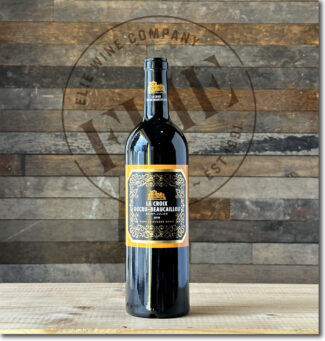 Château Ducru-Beaucaillou ‘La Croix Ducru-Beaucaillou’, 2018 Saint-Julien ($73)
Château Ducru-Beaucaillou ‘La Croix Ducru-Beaucaillou’, 2018 Saint-Julien ($73)
The estate does not market La Croix Ducru-Beaucaillou as a ‘second wine’ because it comes from a different source: an inland vineyard on the south bank of the La Mouline stream close to Château Talbot; it was previously sold as Château Terrey-Gros-Caillou. It is muscular yet fresh, displaying a full range of berry, lavender rose petal, mint, spice and gravel inflections.
*click on image for more info
Margaux: Miraculous Marriage between Density and Grace
In terms of size and renown, Margaux is a vastly important appellation, with 21 Cru Classé properties from the 1855 Bordeaux Classification within its borders and more acres under vine than any other Haut-Médoc AOP but Saint-Estèphe. As feminine as the name are the wines of Margaux, at least by traditional standards—they are famous for their perfumed fragrance and lilting, delicate expression of terroir; in cooler vintages, they may come across as lightweights compared to the powerhouses of Pauillac, but in fine vintages they are incomparable in grace and depth.
Château d’Issan
The roots of Château d’Issan’ vines delve deeply into Margaux’s gravel, but not as deeply as the roots of the estate delve into history. One of the oldest producing châteaux in Bordeaux, wines from d’Issan vineyards were used to toast the marriage of Eleanor of Aquitaine and King Henry the Second. In 2013, Château d’Issan sold a 50% stake to Jacky Lorenzetti of Château Lilian Ladouys, Château Lafon-Rochet in St. Estèphe and Château Pedesclaux in Pauillac. Along with Emmanuel Cruse, the winemaking has been upgraded to include sorting tables and a new pneumatic press along with an increase of the proportion of new French oak barrels used to age the wine; currently an average of 50%.
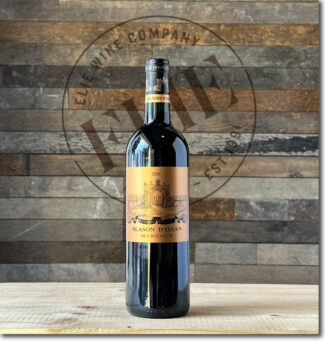 Château d’Issan ‘Blason d’Issan’, 2019 Margaux ($44)
Château d’Issan ‘Blason d’Issan’, 2019 Margaux ($44)
D’Issan’s second wine, introduced in 1995, and made from the estate’s youngest vines. It is fruity and accessible, offering a bouquet of blackberry and cranberry laced with undergrowth, mint, lavender and tobacco leading to full, fruity mid-palate and a mineral-driven finish.
*click on image for more info
Château Brane-Cantenac
One of fifteen Deuxièmes Crus (Second Growths) in the original Bordeaux Wine Official Classification of 1855, the estate had been producing one of the Médoc’s most highly regarded wines long before that. For four consecutive generations, the Lurton family has been at the helm, with Henri Lurton as the current proprietor. He says, “The exceptional terroir of Château Brane-Cantenac is made of deep quaternary-era gravels. Each plot has been carefully studied to plant the most suitable grape-variety, the one which will express itself the best on it. Along with my team we strive to reveal each plot’s potential by working in a plot by plot and intra-plot approach: The ‘Burgundy way.’”
 Château Brane-Cantenac ‘Baron de Brane’, 2020 Margaux ($37)
Château Brane-Cantenac ‘Baron de Brane’, 2020 Margaux ($37)
With a highly aromatic nose typical of Margaux, the 2020 ‘Baron de Brane’ delivers succulent ripe cherry, spice and leather sage and graphite. It’s a supple and creamy place-holder to enjoy on release while waiting for the Grand Vin to develop.
*click on image for more info
Château Durfort-Vivens
Château Durfort-Vivens produces wine from a 150-acre vineyard that sits on deep gravel with a sandy-clay subsoil and in 2016, became the first of the Margaux Classified Growths to obtain both organic farming and biodynamic certifications. While the wines have been labeled ‘zero residue’ since 2014, the property has also been HVE and SME certified since 2019. This primarily due to the input of winemaker Gonzague Lurton, who adds, “The mild air of the Atlantic Ocean and the Gironde, along with shelter from the surrounding Landes forest, give us our temperate climate. Each of our plots is vinified separately and fermented in wooden and concrete vats. Aging then occurs for an average of 18 months in fine-grain French oak.”
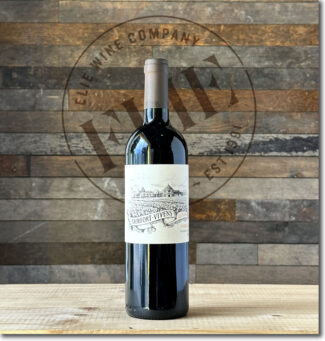 Château Durfort-Vivens ‘Les Plantes’, 2019 Margaux ($44)
Château Durfort-Vivens ‘Les Plantes’, 2019 Margaux ($44)
88% Cabernet Sauvignon 10% Merlot and 2% Cabernet Franc, Durfort-Vivens second wine is a cornucopia of ripe red orchard fruit; kicking in mid-palate are blackberries, sesame seeds and salted chocolate with a touch of menthol at the end.
*click on image for more info
Château Margaux
This formidable Premier Cru has been owned by the Mentzelopoulos family since 1978. Following the death of their winemaker through 33 vintages (Paul Pontallier) the estate is currently overseen by director Philippe Bascaules and technical director Sebastien Vergne, working with consultant Eric Boissenot. In total, the estate has 200 acres under vine, with Cabernet Sauvignon dominant (75%) and Merlot making up most of the rest, along with a smattering of Cabernet Franc and Petit Verdot. Typically, about 30,000 cases of red wine are made, with the Grand Vin usually accounting for just over 40% of the total and white wine amounting to less than 3,000 cases.
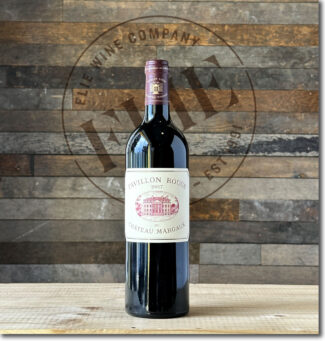 Château Margaux ‘Pavillon Rouge de Château Margaux’, 2015 Margaux ($297)
Château Margaux ‘Pavillon Rouge de Château Margaux’, 2015 Margaux ($297)
More emphasis has been placed on quality when producing ‘Pavillon Rouge’ in this century than ever before in history. According to Philippe Bascaules, “For the 2015 vintage no more than 23% of our harvest went into the blend. Thanks to this severity, the style of the Pavillon Rouge is continuing to approach that of the Grand Vin. The Cabernet Sauvignon constitutes 74% of the blend; it brings a dense texture, an ample palate and a long finish sustained by the peppered mint and sap aromas. The Merlot accounts for 21% of the blend and envelops the wine with a captivating silky veil. The 4% of Petit Verdot brings spicy aromas and the 1% of Cabernet Franc completes the blend. With its structure, its refinement and its length, the Pavillon Rouge 2015 is probably the best Pavillon Rouge that we have ever produced.”
*click on image for more info
Pauillac: Elegance and Power Coupled with Complexity
The most singularly revered appellation on earth; Pauillac is to wine what The Beatles are to pop music. Though fewer than ten square miles in total, three of the top five châteaux in the 1855 Médoc Classification are located here, and so varied is the topography that each estate is able to market the individual nature, in style and substance, of their wares. And it is this trio of skills—growing, producing and selling—that has made the region almost a cliché, synonymous with elite wine, where futures sell for exorbitant rates long before the wine is even in the bottle.
Château Pichon Longueville – Comtesse de Lalande
Virginie, the Comtesse de Lalande, and her two sisters also received as an inheritance a portion of the Château Pichon Longueville estate. Once considered unusual for using a much higher proportion of Merlot in the final blend, the estate has, over the years, complied to more ‘Pauillac’ standards; today, the Grand Vin may contain up to 75% Cabernet Sauvignon.
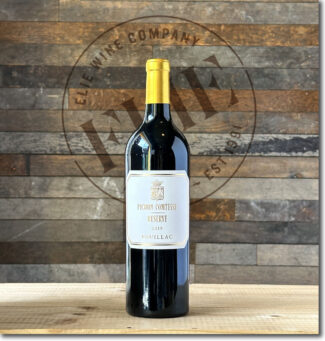 Château Pichon-Comtesse ‘Pichon Comtesse Réserve’, 2019 Pauillac ($75)
Château Pichon-Comtesse ‘Pichon Comtesse Réserve’, 2019 Pauillac ($75)
Representing one of the best of recent editions of this wine, the 2019 Réserve is composed of 51% Cabernet Sauvignon, 46% Merlot, and 3% Cabernet Franc. It opens with a savory blend of smoked meats, tapenade, and herbs and way to a core of cassis, pencil shavings and cracked pepper with a waft of cumin seed above layers of fruit and spice.
*click on image for more info
Château Pichon Baron – Baron de Pichon-Longueville
‘When you’re number two, you try harder’ is an aphorism that may hold true in automobile rentals, but in the Médoc, the chances are slim that any Deuxième Cru will have its seat upgraded any time soon. But it is arguable to suggest that Pichon Longueville is first among seconds, and it boasts a terroir essentially identical to Château Latour, immediately next door. Originally part of a larger estate (Château Pichon Longueville) the property was subdivided in 1850 between the owner’s children, among them, Baron Raoul de Pichon Longueville.
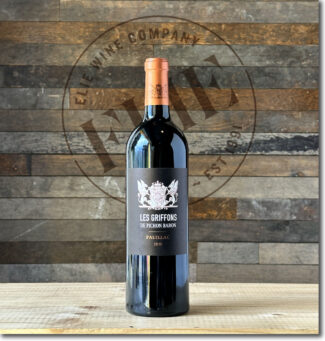 Château Pichon-Baron ‘Les Griffons de Pichon Baron’, 2018 Pauillac ($64)
Château Pichon-Baron ‘Les Griffons de Pichon Baron’, 2018 Pauillac ($64)
Château Pichon Baron’s second label, 52% Cabernet Sauvignon and 48% Merlot. It is filled with the cedar-and-camphor tinged cassis that is trademark of Pauillac Cabernet, well-balanced by the plummy lushness of Merlot fruit, everything wrapped in a delightful cloak of finely-grained tannins and elegant oak.
*click on image for more info
Château Latour
Latour’s Grand Vin label is synonymous with its prime terroir, ‘L’Enclos’—a hundred sixteen walled acres studded with old vines, a mere thousand feet from the Gironde. The estuary mellows weather extremes while the soil is key to the wine’s legendary complexity; clay gravel in the heart with sandy gravel at the periphery. These deposits, millions of years old, encourage the vines to develop root systems up to ten feet deep, while the rich subsoils that retain rainwater and see the vines through droughts. The opposite problem is solved mechanically, primarily by a drainage system installed in the 19th century. The combination of location and technical know-how permits Latour to turn out exceptional wines even in vintages that are deemed to have been off years.
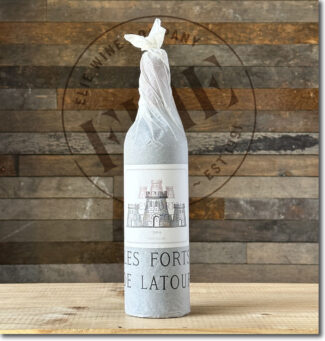 Château Latour ‘Les Forts de Latour’, 2014 Pauillac ($315)
Château Latour ‘Les Forts de Latour’, 2014 Pauillac ($315)
71.4% Cabernet Sauvignon and 28.6% Merlot; Pauillac was, quite arguably, the star appellation of 2014—a vintage which may be called ‘dramatic’ without overstating. For most of the season, it was shaping up to be a forgettable harvest (like 2013), but in September the weather shifted from damp to gorgeous, and a long Indian Summer that extended well into October led to a delayed harvest. One of the hallmarks of 2014 was this extended hang time, which in the finest wines manifested itself in rich, fresh fruit flavors and silky, polished tannins. As a result, the 2014 Les Forts has been called ‘Margaux-like’.
*click on image for more info
Château Mouton Rothschild
The hallowed vineyards of Mouton Rothschild are planted on a narrow strip of land close to the Gironde, which moderates the temperature and irrigates the land. The soils are gravel-filled, unsuitable for agriculture beyond grapes, and yet here as set the lowly vine on a pedestal unmatched throughout most of the rest of the world. In 1988, Baroness Philippine de Rothschild succeeded her father Baron Philippe at the helm of the estate, becoming the guarantor of quality of a wine so illustrious that it was the only one to have its status upgraded to Premier Cru Classé from the original 1855 classification. The Baroness proudly exclaimed Mouton’s motto: “First I am, second I was; I, Mouton do not change.”
 Château Mouton Rothschild ‘Le Petit Mouton de Mouton Rothschild’, 2016 Pauillac ($342)
Château Mouton Rothschild ‘Le Petit Mouton de Mouton Rothschild’, 2016 Pauillac ($342)
A blend of 62% Cabernet Sauvignon, 35% Merlot and 3% Cabernet Franc, Mouton’s second label shows seductive expression in a somewhat austere vintage. It offers up an intensely plummy nose with cigar box and forest-floor scents with layers of kirsch, blood orange, red and black currants behind a firm frame of grainy tannins.
*click on image for more info
Pessac-Léognan: Médoc-like But With a More Supple Texture
As a stand-alone appellation, Pessac-Léognan is still in the bloom of youth; it was formally established in 1987 in recognition of the truly outstanding long-lived red and white wines of northern Graves. The appellation includes the only red-wine producer outside the Haut-Médoc to be classified in 1855, the Premier Cru Château Haut-Brion. Soils here, as in most of Graves, are filled with gravel and sand, a terroir that favors Cabernet Sauvignon and Cabernet Franc over Merlot.
Château Smith Haut Lafitte
Rated as a red wine ‘Grand Cru Classé’ in the 1959 Classification of Graves, the château sits on a low hill of pebbles and sand deposited by the Garonne River, offering grape vines not only superb drainage, but also reflected sunshine to lengthen the day’s ripening period. The estate is not to be confused with Château Lafite Rothschild (the Pauillac superstar) with which it has no connection, but both were named for their elevated physical status— ‘la fite’ is an ancient dialectical word for hill.
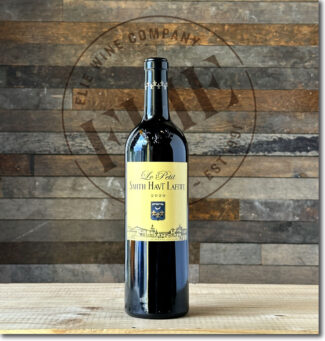 Château Smith Haut Lafitte ‘Le Petit Smith Haut Lafitte’, 2020 Pessac-Léognan ($53)
Château Smith Haut Lafitte ‘Le Petit Smith Haut Lafitte’, 2020 Pessac-Léognan ($53)
Composed of 60% Cabernet Sauvignon and 40% Merlot and aged in 30% new barriques, the 2020 Le Petit Haut Lafitte is an alluring aromatic blend of blackberry preserves warm cassis with wafts of roses and cinnamon toast and a hint of dried mint.
*click on image for more info
Château La Mission Haut-Brion
Despite a fabulously detailed history dating back centuries, the La Mission Haut-Brion property has seen some checkered years. The Woltner family, who held title to the property between 1919 and 1983, were responsible for the estate’s second life, and today it is owned by Joan Dillon, the Duchesse de Mouchy; her son Prince Robert of Luxembourg took over from his mother as Président Directeur Général in 2008 and he runs the estate with the assistance of manager Jean-Philippe Delmas, son of Jean-Bernard Delmas. Under their direction, the wines made here are capable of challenging Château Haut-Brion for supremacy within the appellation.
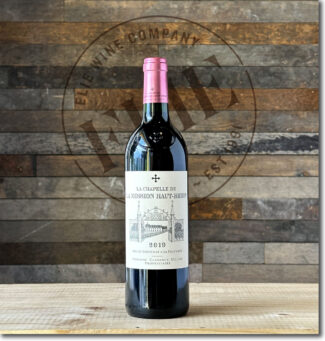 Château La Mission Haut-Brion ‘La Chapelle de La Mission Haut-Brion’, 2019 Pessac-Léognan ($99)
Château La Mission Haut-Brion ‘La Chapelle de La Mission Haut-Brion’, 2019 Pessac-Léognan ($99)
Composed of 50.1% Merlot, 45.5% Cabernet Sauvignon and 4.4% Cabernet Franc, a very precise blend that creates a remarkable synergy; inky dark berries shrouded in pretty, spicy smoke with hints of licorice and graphite.
*click on image for more info
Château Haut-Bailly
At just under 75 acres, Haut Bailly is a moderate-sized estate that produces about 80,000 bottles per year. The grapes line up in the vineyard in an order typical for Haut-Médoc, 60% Cabernet Sauvignon, 34% Merlot, 3% Cabernet franc and 3% Petit Verdot, although it is located in the commune of Léognan, which is usually more associated with white wine production. Since being purchased in 1998 by American banker Robert G. Wilmers, Bailly has steadily improved its output and now numbers in the upper echelon of Pessac-Léognan.
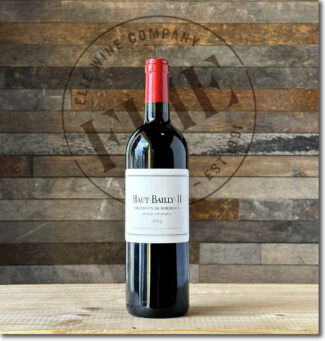 Château Haut-Bailly ‘ Haut-Bailly II’, 2019 Pessac-Léognan ($45)
Château Haut-Bailly ‘ Haut-Bailly II’, 2019 Pessac-Léognan ($45)
Haut-Bailly II is the new name for the estate’s second wine. Previously sold as ‘La Parde de Haut-Bailly’, the 2019 is somewhat Merlot-heavy, with 65% Merlot and 35% Cabernet Sauvignon. It is vinified and aged in 30% new French oak and shows luscious aromas of black raspberries, cherries, cassis, graphite, and spicy wood, reflecting the vintage’s fresh, clean, pure character and beautiful richness.
*click on image for more info
Pomerol: Plump, Velvety Mouthfeel and Notable Plummy Depth
Lacking a detail-laden history, a focal-point eponymous town, a château-laden landscape or an ancient classification system, Pomerol does not conform to the accepted image of a Bordeaux wine district. Still despite its tiny size (under 2000 acres), Pomerol has wormed its way onto a prominent perch among the world’s most revered wine regions. Merlot is the dominant grape variety in Pomerol and as a result, the wines tend to be rich, silky and approachable at an early age, while also being capable of extended aging. Cabernet Franc is also often present, adding structure and an element of savory spice to the blend. The best wines come from the eastern section of the appellation on the marginally higher land where Pomerol meets Saint-Émilion. It is here that the most famous Pomerol is found, including the château that is more famous than the appellation itself, Pétrus.
Château Clinet
Clinet lies at one of the highest points on the Pomerol plateau, home to one of the oldest vineyards in the appellation. Its 27 acres of vines are planted to 88% Merlot and 12% Cabernet Sauvignon at an average age of 42 years. Ronan Laborde, at the helm of the estate since 2004, has engaged in substantial transformations: Replanting, developing environmentally-friendly practices, rebuilding the winemaking facilities and reorganizing Clinet’s distribution. He says, “Our philosophy is centered upon preserving the Clinet spirit: celebrating the relationship between man and nature, and the satisfaction of receiving such a wonderful gift from Mother Earth.”
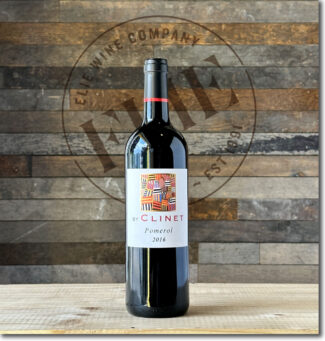 Château Clinet ‘Fleur de Clinet’, 2016 Pomerol ($49)
Château Clinet ‘Fleur de Clinet’, 2016 Pomerol ($49)
Rather than being a ‘second wine’, ‘Pomerol is a Cuvée de Négoce—a blend made from selection of wine-growers, including Château Clinet. The vinification and aging are carried out by the Clinet team, with as much attention as for the Grand Vin and aged in used oak to enhance the finesse of the Pomerol fruit, with cranberry, red currant and truffle with hints of fresh hazelnut.
*click on image for more info
Château L’Eglise-Clinet
Though it may not roll off the tongue as readily as Pétrus, Château L’Eglise-Clinet is now amongst the elite producers in Pomerol. Its vineyards were originally part of Château Clinet and Château Clos L’Eglise respectively; they fused in the 1950s. L’Eglise-Clinet was owned and run by Denis Durantou since 1982: Its 14 acres of vineyards are located on the Pomerol plateau, where the soils are rich in gravel, clay, sand and iron. As a result, as in much of Pomerol, L’Eglise-Clinet’s wine is Merlot-based, typically 80% Merlot and 20% Cabernet Franc. Denis Durantou passed away at age 62 in 2020.
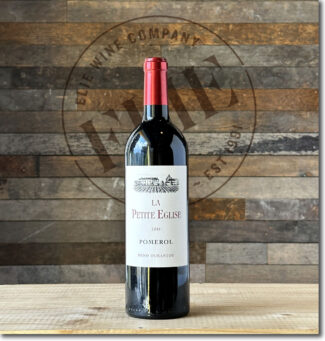 Château L’Eglise-Clinet ‘La Petite Eglise’, 2018 Pomerol ($73)
Château L’Eglise-Clinet ‘La Petite Eglise’, 2018 Pomerol ($73)
Denis Durantou’s second wine is deadly serious in its own right (bank), but is found at a fraction of the price of the flagship; as such, it is considered perhaps the best value in Pomerol. Since its debut in 2004, this has been a 100% Merlot cuvée and has come from fruit harvested on sandier soils. However, in 2018, many Merlot vines were dug up for replanting, as a result, this ‘La Petite’ contains 20% Cabernet Franc. Only 400 cases were produced, aged in 35% new oak in the Clinet cellars. The wine shows crushed berries, kirsch, black truffles and spring violets.
*click on image for more info
Saint-Émilion: Supple, Round and Plenty of Silky Mouthfeel
Nowhere in Bordeaux is a genuflection to history more obvious than in Saint-Émilion, which is speckled with Roman ruins and at whose center stands a limestone church built by the region’s namesake, Saint Émilian of Lagny. The vineyards are numerous and small, averaging around fifteen acres and spread across a triad of terroirs that can be roughly defined as a central limestone plateau, the clay and chalk-rich slopes of that plateau and the flatland beyond. What all three topographical areas have in common is cooler soils better suited to Merlot and Cabernet Franc. For the most part, Cabernet Sauvignon does not ripen well in Saint-Émilion except in small pockets, most notably on an ancient alluvial terrace in the northwest, where free-draining gravel soils are similar to those found in the best properties of the Graves and Médoc.
Château Monbousquet
When Gérard Perse bought Château Monbousquet in 1993, it was his first, though no means his last vineyard purchase. No one would have blamed him for having second thoughts—his first harvest was in the notorious difficult 1997, in which he was only able to produce about 500 bottles of wine. In the aftermath of the disaster, he began renovating the estate, analyzing and ultimately draining the 80-acre vineyard to limit the rise of the water table during prolonged wet spells. The winemaking facility and cellar ware rebuilt and then, working with a French pension fund and French tax laws, he arranged for his daughter Angélique and her husband, Henrique Da Costa to take over Monbousquet along with Gérard’s subsequent purchases, Château Pavie, Château Bellevue Mondotte and Château Pavie Decease.
 Château Monbousquet ‘Angélique de Monbousquet’ , 2018 Saint-Émilion Grand Cru ($35)
Château Monbousquet ‘Angélique de Monbousquet’ , 2018 Saint-Émilion Grand Cru ($35)
60% Merlot, 30% Cabernet Franc and 10% Cabernet Sauvignon; the wine is aged 18 months in French oak barrels and bottled unfiltered, producing a round, creamy second label from terroir identical to the first. Stone and walnut undertones blanket a rich, fruit-forward bouquet tinged on the palate with black cherry, chocolate, licorice and cloves.
*click on image for more info
Château La Gaffelière
Based on the Saint-Émilion rating system, La Gaffelière was a Premier Grand Cru Classé B, but like Châteaux Angélus, Cheval Blanc and Ausone did following the 2012 update, Château La Gaffelière has now dropped out of the system, stating that the new method of ranking called into question the quality level of a terroir that has been acclaimed and distinguished by the AOP wine authorities for more than 65 years.
One thing did not change: After three centuries, Château La Gaffelière still belongs to the Malet-Roquefort family. And who would leave? Château La Gaffelière is fabulously well-placed, just below Ausone and next to Bélair-Monange and Canon La Gaffelière on a combination of plateau, côte (slope) and pied de côte (foot of the slope) clay-limestone terroirs. With 55 acres under vine, Alexandre de Malet-Roquefort says, “Our wine comes from an exceptional terroir nested between the hills of Pavie and Ausone. But a great terroir is nothing without the willingness of men. The family de Malet Roquefort has run the estate with passion for more than three centuries, with a single purpose: Upgrading the vineyards whilst producing an amazing ageing wine.”
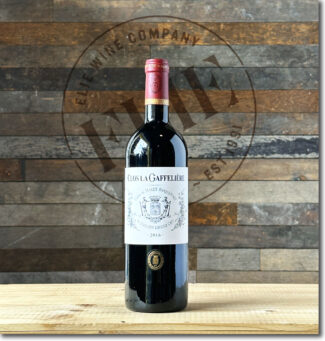 Château La Gaffelière ‘Clos La Gaffelière’, 2016 Saint-Émilion ($45)
Château La Gaffelière ‘Clos La Gaffelière’, 2016 Saint-Émilion ($45)
85% Merlot and 15% Cabernet Franc, the wine shows stewed red and black plums, mulberries and Morello cherries with hints of damp earth, tar and bouquet garni. Instantly approachable with fine-grained tannins and loads of freshness.
*click on image for more info
Château Troplong Mondot
Château Troplong Mondot is a paean to sustainability: For the last 20 years, the use of herbicides has been totally eliminated and the estate Troplong Mondot has set in place a sophisticated drainage protocol to overcome the subsoil’s hydromorphy and eight dray horses have now replaced tractors. “In addition,” says estate manager Aymeric de Gironde, “new plantings are arranged in staggered rows and there is less compaction of the soils due to the animal traction, so the vineyard breathes better.”
 Château Troplong Mondot ‘Mondot de Troplong Mondot’, 2018 Saint-Émilion ($59)
Château Troplong Mondot ‘Mondot de Troplong Mondot’, 2018 Saint-Émilion ($59)
85% Merlot, 13% Cabernet Sauvignon and 2% Cabernet Franc, the wine shows black cherries, red plums, graphite, espresso, Asian spices, and gravelly earth.
*click on image for more info
Château-Figeac
Figeac is the largest estate of Saint-Émilion, covering 133 acres, of which around a hundred are under vine. It is known as the most Médoc of the Right Bank, blending mostly Cabernet grapes over Merlot. The wine’s distinctive ‘old Bordeaux’ style comes from complex soils: Three warm gravel hills surrounding the estate and offer natural drainage, while cooler blue clay subsoil provides nutrients for deep vine roots. Several microclimates and older vines lend character. Frédéric Faye, winemaker and managing director of Château-Figeac, says the estate has “always produced great wines” but in recent vintages, fine-tuning has paid off: “The scope for qualitative improvement lies in details that go even further to highlight the uniqueness of the Cru and its terroir purity. Such refinement includes improving tannin texture, aromatic expression and the power of seduction in youth while preserving the aging potential and identity.”
 Château-Figeac ‘Petit-Figeac’, 2018 Saint-Émilion ($89)
Château-Figeac ‘Petit-Figeac’, 2018 Saint-Émilion ($89)
A blend of 45% Cabernet Sauvignon, 39% Merlot and 16% Cabernet Franc, all from young vines. The vintage is aged for 15 to 18 months in French oak barrels, 30% new wood. Sharing texture with the estate’s Grand Vin along with a dark, bright color, Petit-Figeac 2018 is expressive and fresh, showing sweet dark cherry, plum, tobacco, mint, licorice and leather.
*click on image for more info
Château Ausone
Despite being heralded as a Premier Grand Cru Classé A, Château Ausone retains a relatively low profile, due in no small measure its size. Encompassing a mere 17 acres in a region where 70% of the estates are larger than 50 acres, the output of Ausone is similarly restrained; even in spectacular vintages, fewer than 2,000 cases are produced. Château Haut-Brion, in contrast, releases ten times as many.
But ask almost any French vigneron to name the best terroir in Bordeaux and the majority will say that it belongs to Château Ausone. Grown on Asteria limestone along terraces splashed in sunlight, protected from wind by geography and then nurtured in the cellar by Alain Vauthier (whose family has been making wine at Ausone since 1690), the typical profile of an Ausone Grand Vin is reticent and reserved in its youth, with a persistent elegance supplemented (especially in recent vintages) by a polished texture and aromatic complexity. With maturation, these elements combine to make Château Ausone a sublime secret.
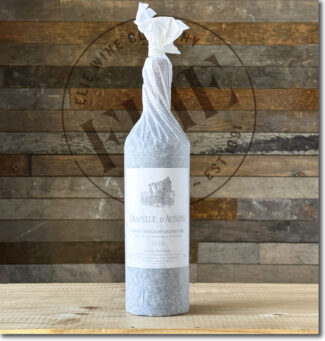 Château Ausone ‘Chapelle d’Ausone’, 2019 Saint-Émilion ($270)
Château Ausone ‘Chapelle d’Ausone’, 2019 Saint-Émilion ($270)
45% Merlot, 45% Cabernet Franc, 10% Cabernet Sauvignon, with 85% new oak; a blend of wine from young vines with a few barriques of declassified Ausone. Brilliant flashes of juicy blackberry, warm plum compote and redcurrant jelly in the forefront with suggestions of sassafras, cedar chest, menthol and aniseed throughout. Fewer than one thousand cases were made.
*click on image for more info
Vintage Journal
2020: ‘Classic Modern. Highly Aromatic With Beguiling Purity’
January and February were mild, and March began warm and wet with bud break about two weeks ahead of the long-term average. April was the third hottest for 50 years and wet weather continued into May, meaning intense mildew pressure. The last two weeks of May and the first week of June, were dry and warm, and flowering came off successfully. There was more rain in mid-June, but then eight weeks of largely dry weather, though without heat spikes and with cool nights, steady heat but not fierce heat. Dramatic storms hit during the week of August 9, refreshing the vines, and conditions then turned cooler until the end of the month and the season ended just one week ahead of the long-term average. 2020 wines are fresh, lively, vivid and balanced, without the baroque power of 2018 or the concentrated force of 2019, but with beguiling purity of fruit and floral notes. At the commune scale, Margaux and Pessac-Léognan are both particularly successful, perhaps because Merlot plays a more significant role here than elsewhere on the Left Bank.
2019: ‘Vivacious With Poise and Concentrated Force’
After a mild, dry seasonal start, April was wet and a little cooler than normal, followed by a cool May. Bud burst was early, and there was some frost damage in areas set well back from the Gironde on April 13th and May 5th and 6th. Flowering, after the cooler late spring, came as normal from May 20th onwards, though rain during the flowering period caused some irregular fruit set. After an unsettled early June, late June was fiercely hot; July continued hot and dry, with some welcome heavy rain at the end of the month. August was copybook, with a pulse of heat towards the end, by which time the vines were showing signs of heat stress, though early September warmth was more temperate. Once again rain came to the rescue between 23rd and 26th September followed by fine weather at the end of the month and into October: a perfect script for Cabernet Sauvignon, and an untroubled harvest was completed in early October. Magnificent wines can be found in every Left Bank appellation, with St Julien, Margaux and Pessac-Léognan all outstanding. The wines are dense yet vivacious, with striking structure, intensity, purity and poise: they will age very well.
2018: ‘Flamboyant With Good Acidity and Ample Tannin’
The first six months of 2018 were extraordinarily wet in Bordeaux: December 2017, then January, March, April and June 2018 all had rainfall above the 30-year average. March and early April were cool, delaying bud break and flowering, and there was hail in both late May and in July in the southern Médoc; flowering itself, though, took place in fine conditions in the first part of June. Mildew pressure, however, was intense and unremitting due to saturated soils and high levels of humidity. By mid-June, temperatures rose and the sun began to shine; a magnificent summer then ensued. July, August and September temperatures were all well above the 30-year-average, and September was notably dry and sunny throughout the month. Drought stress, however, was rare since there was so much water in the ground that the threat of mildew persisted until well into August, with organically and biodynamically cultivated properties at particular risk. The harvest was lengthy, with plenty of time to pick according to each property’s definition of perfect ripeness. The red wines are generous, vital and richly constituted, with ample tannins and fresh acidity, too; they will age very well.
2016: ‘Cabernet-based Wines are Structured, Fine and Fresh’
A dry, warm autumn gave way, in January, to a prodigiously wet though mild winter (including the wettest month of January since 1920) and a cool March. April and May were chaotic, but the weather during flowering in early June turned propitious. After flowering and some further rain, summer became hot and dry; were it not for the wet spring, the almost complete lack of rain in July and August would have caused drought damage. July’s heat was normal, and there were two small heatwaves in August, but in general nights were cool. The whites were picked from the beginning of September. In mid-September, welcome heavy rains helped the parched vines to restart their drought-blocked maturation process, and the rest of the month was cool and fine before a little more rain on September 30. Merlots began to be picked in early October, and the Cabernets in mid-October; little sorting was required.
2015: ‘The Best are Pure, Concentrated With Vibrant Acidity’
After the driest autumn in 115 years, a wet winter was needed but only partially supplied: November was wet; December dry; and January and February normal. March and early April saw a combination of warm days and cool nights, then the rest of April and May were very warm and dry, leading to a rapid and precocious flowering. June and July were exceptionally hot and rainless, eventually causing some drought stress. Fortunately, four separate storms in August brought the vines some relief, and an early white-wine harvest began on August 24th. Heavy rains came prior to the red wine harvest, in mid-September, followed by sunshine with cool nights. There was more heavy rain over the first weekend of October, but in general, both Merlots and Cabernets were picked in unhurried conditions. Red wines had a good if not quite great year; mitigating factors were the high-summer drought and intermittent rains at harvest. Weather conditions favored the southern Médoc and Pessac-Léognan.
2014: ‘Dramatic Year Delivered Classical Style’
After a warm and unusually wet winter, spring began with very mild March temperatures, and budburst was two weeks ahead of average. The inevitable frost risk was generally averted by further warmth in April. A cool and damp May led to an extended flowering period, but early June heat confirmed the advanced cycle. After that, though, the weather cooled considerably, and there were violent storms in the Northern Médoc with hail on June 8th and heavy rain on the 22nd. July was damp and dull, and August cool (2°C below normal), slowing the cycle again. Finally the weather changed once again at the end of August, and it remained fine thereafter until the end of October. The record-breaking Indian summer meant that both Cabernets and Merlots could be picked at optimum ripeness.
- - -
Posted on 2023.06.15 in Pauillac, Saint-Estephe, Saint Julien, Margaux, Pessac-Léognan, Graves, Saint-Emilion, Pomerol, Haut-Médoc, France, Bordeaux, Saturday Sips Wines, Wine-Aid Packages | Read more...
Featured Wines
- Notebook: A’Boudt Town
- Saturday Sips Wines
- Saturday Sips Review Club
- The Champagne Society
- Wine-Aid Packages
Wine Regions
Grape Varieties
Albarino, Albarín Blanco, Albarín Tinto, Albillo, Aleatico, Aligote, Arbanne, Aubun, Barbarossa, barbera, Biancu Gentile, bourboulenc, Cabernet Franc, Caino, Caladoc, Calvi, Carcajolu-Neru, Carignan, Chablis, Chardonnay, Chasselas, Cinsault, Clairette, Corvina, Counoise, Dolcetto, Erbamat, Ferrol, Frappato, Friulano, Fromenteau, Gamay, Garnacha, Garnacha Tintorera, Gewurztraminer, Graciano, Grenache, Grenache Blanc, Groppello, Juan Garcia, Lambrusco, Loureira, Macabeo, Macabou, Malbec, Malvasia, Malvasia Nera, Marcelan, Marsanne, Marselan, Marzemino, Mondeuse, Montanaccia, Montònega, Morescola, Morescono, Moscatell, Muscat, Natural, Niellucciu, Parellada, Patrimonio, Pedro Ximénez, Petit Meslier, Petit Verdot, Pineau d'Aunis, Pinot Blanc, Pinot Gris, Pinot Meunier, Pinot Noir, Pouilly Fuisse, Pouilly Loche, Poulsard, Prieto Picudo, Riesling, Rondinella, Rose, Rousanne, Roussanne, Sagrantino, Sauvignon, Sauvignon Blanc, Savignin, Sciacarellu, Semillon, Serine, Souson, Sparkling, Sumoll, Sylvaner, Syrah, Tannat, Tempranillo, Trebbiano, Trebbiano Valtenesi, Ugni Blanc, vaccarèse, Verdicchio, Vermentino, Xarel-loWines & Events by Date
- September 2025
- August 2025
- July 2025
- June 2025
- May 2025
- April 2025
- March 2025
- February 2025
- January 2025
- December 2024
- November 2024
- October 2024
- September 2024
- August 2024
- July 2024
- June 2024
- May 2024
- April 2024
- March 2024
- February 2024
- January 2024
- December 2023
- November 2023
- October 2023
- September 2023
- August 2023
- July 2023
- June 2023
- May 2023
- April 2023
- March 2023
- February 2023
- January 2023
- December 2022
- November 2022
- October 2022
- September 2022
- August 2022
- July 2022
- June 2022
- May 2022
- April 2022
- March 2022
- February 2022
- January 2022
- December 2021
- November 2021
- October 2021
- September 2021
- August 2021
- July 2021
- June 2021
- May 2021
- April 2021
- March 2021
- February 2021
- January 2021
- December 2020
- November 2020
- October 2020
- September 2020
- August 2020
- July 2020
- June 2020
- May 2020
- April 2020
- March 2020
- February 2020
- January 2020
- December 2019
- November 2019
- October 2019
- September 2019
- August 2019
- July 2019
- June 2019
- May 2019
- April 2019
- March 2019
- February 2019
- January 2019
- December 2018
- November 2018
- October 2018
- September 2018
- August 2018
- July 2018
- June 2018
- May 2018
- April 2018
- March 2018
- February 2018
- January 2018
- December 2017
- November 2017
- October 2017
- September 2017
- August 2017
- July 2017
- June 2017
- May 2017
- April 2017
- March 2017
- February 2017
- January 2017
- December 2016
- November 2016
- October 2016
- September 2016
- August 2016
- July 2016
- June 2016
- May 2016
- April 2016
- March 2016
- February 2016
- January 2016
- December 2015
- November 2015
- October 2015
- September 2015
- August 2015
- July 2015
- June 2015
- May 2015
- April 2015
- March 2015
- February 2015
- January 2015
- December 2014
- November 2014
- October 2014
- September 2014
- August 2014
- July 2014
- June 2014
- April 2014
- March 2014
- February 2014
- January 2014
- December 2013
- November 2013
- October 2013
- September 2013
- August 2013
- July 2013
- June 2013
- May 2013
- April 2013
- March 2013
- February 2013
- January 2013
- December 2012
- November 2012
- October 2012

